October 7, 2022 - Williamsport, PA
Lycoming Factory
|
|
Today's mission: fly to Williamsport, Pennsylvania and visit the Lycoming Factory. Weather: not bad.
Here we go! Passing over Martin State Airport.
|
| |
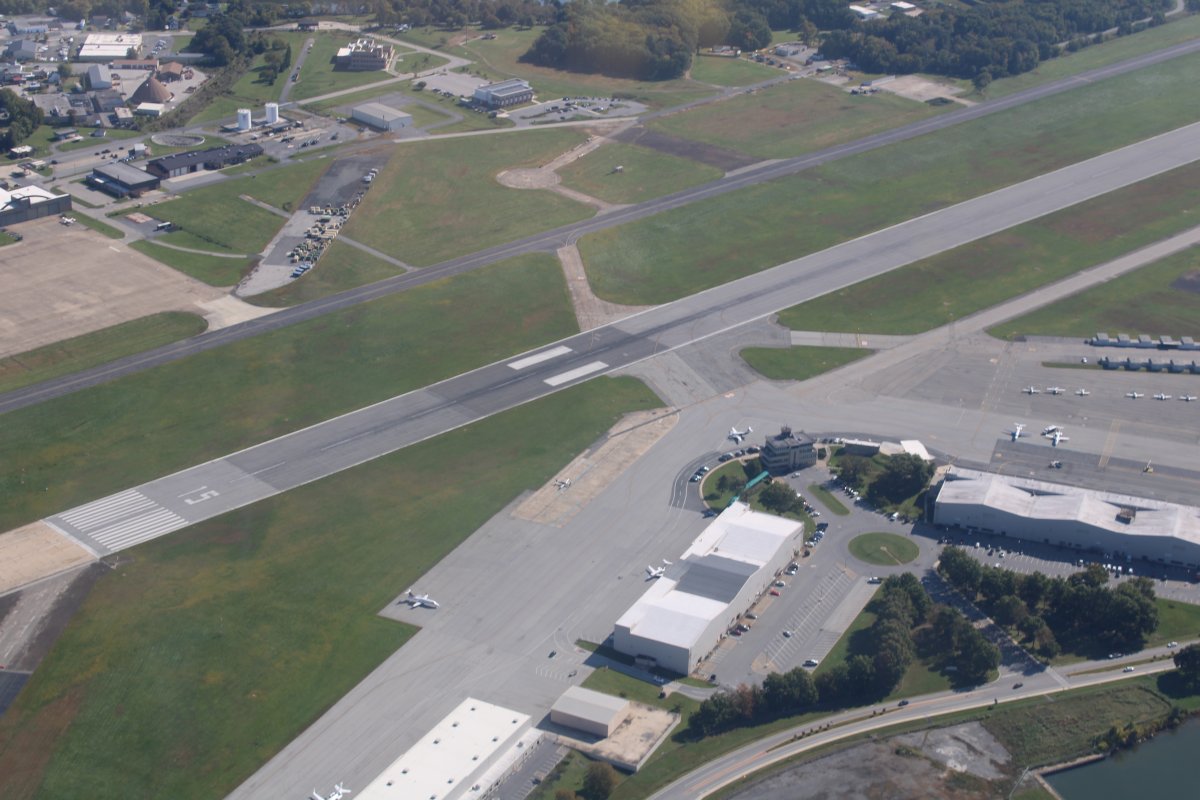 |
|
|
Looking down at the complex I-95/I-695 intersection.
|
| |
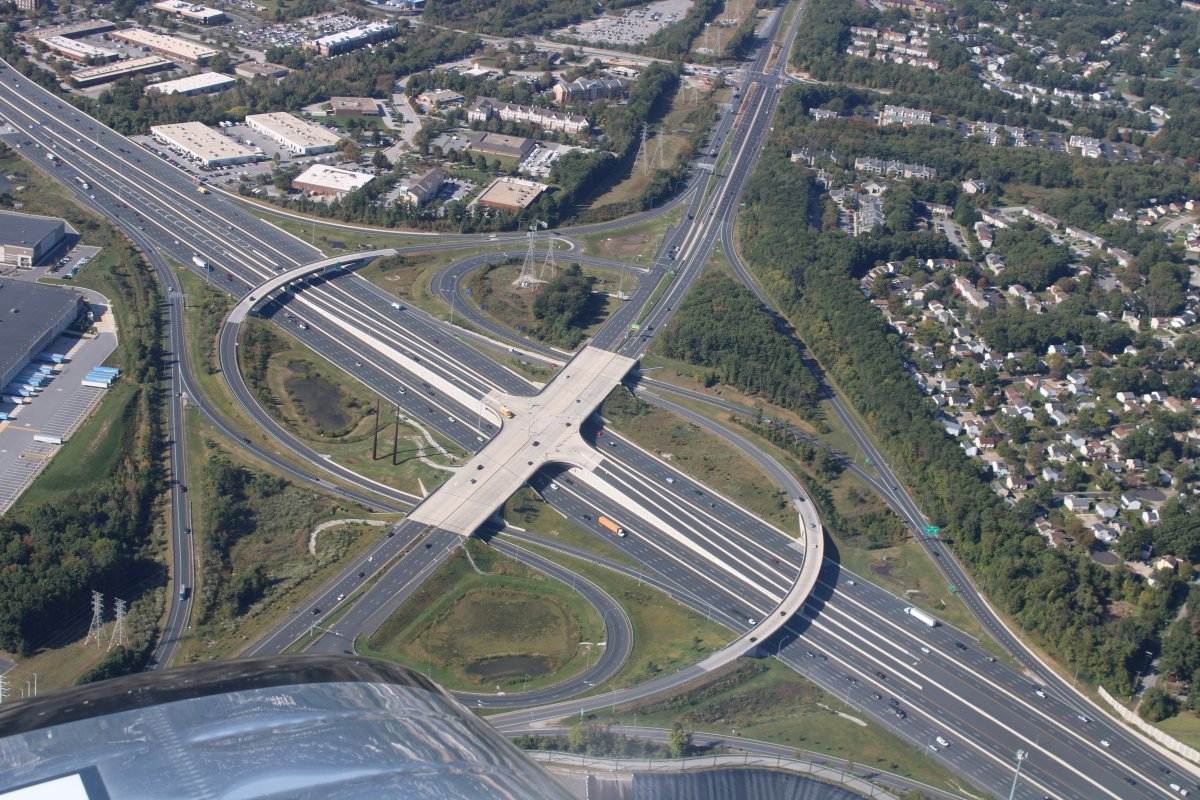 |
|
| Looking down at Three Mile Island nuclear power plant. Here's my solution for solving the United States energy problems of the future as the price of oil and gas gradually increase into unaffordability: build 200 nuclear power plants. You say it's not safe? The U.S. Navy has been running its aircraft carriers and submarines safely on nuclear power since the 1960s. |
| |
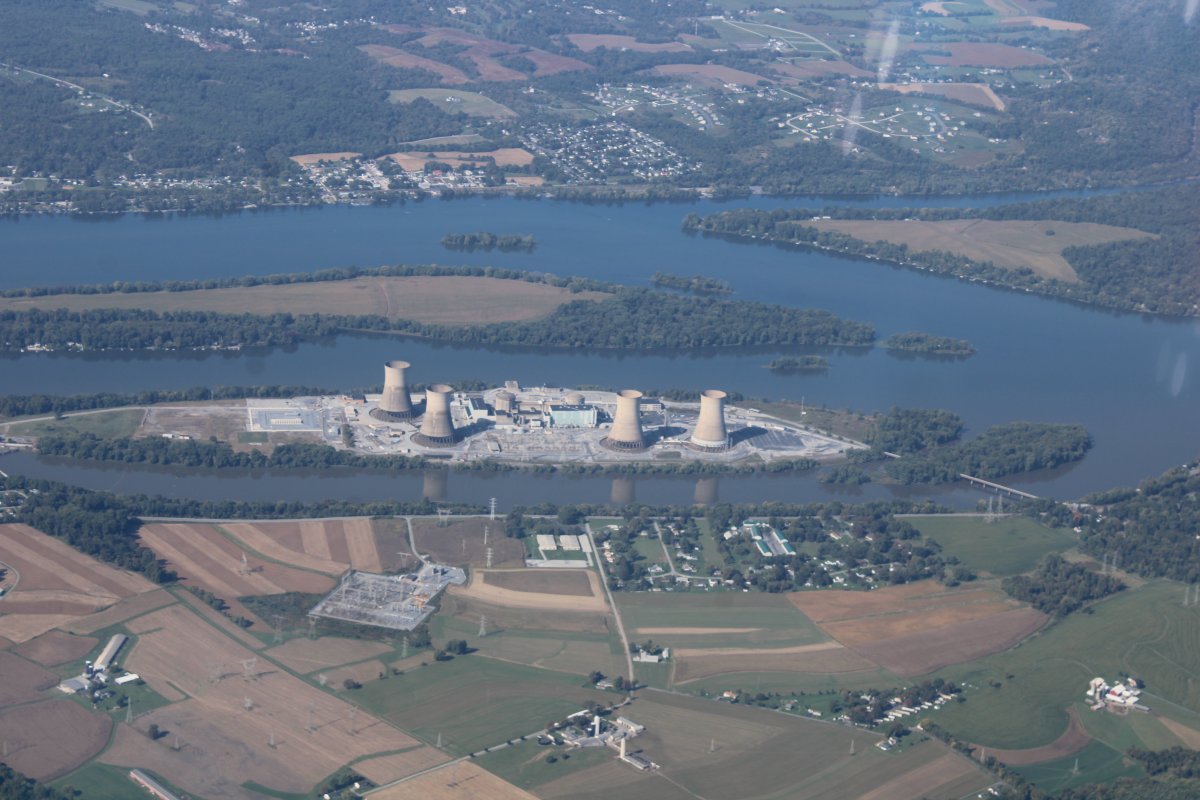 |
|
|
Passing by Harrisburg International Airport (KMDT). Another airport, Capital City (KCXY) is visible on the other side of the river at top.
|
| |
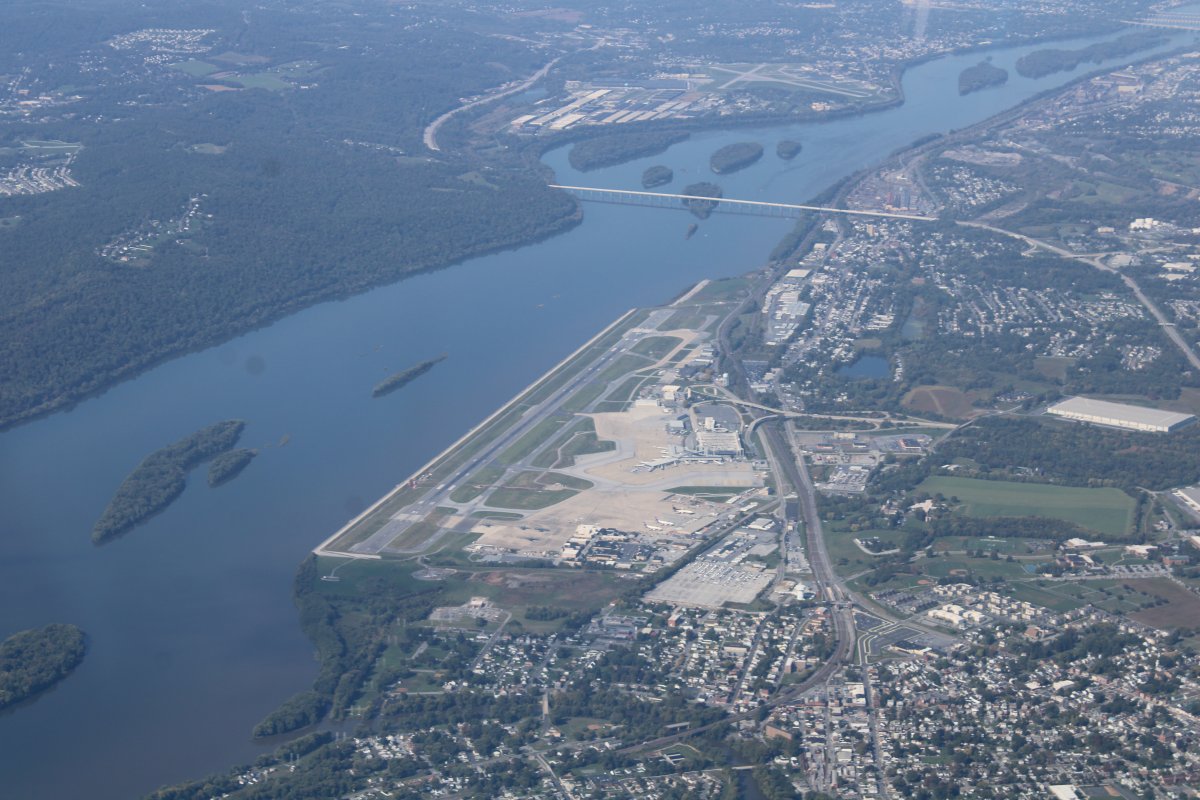 |
|
| A better look at Capital City Airport. I landed there once in the Citabria. |
| |
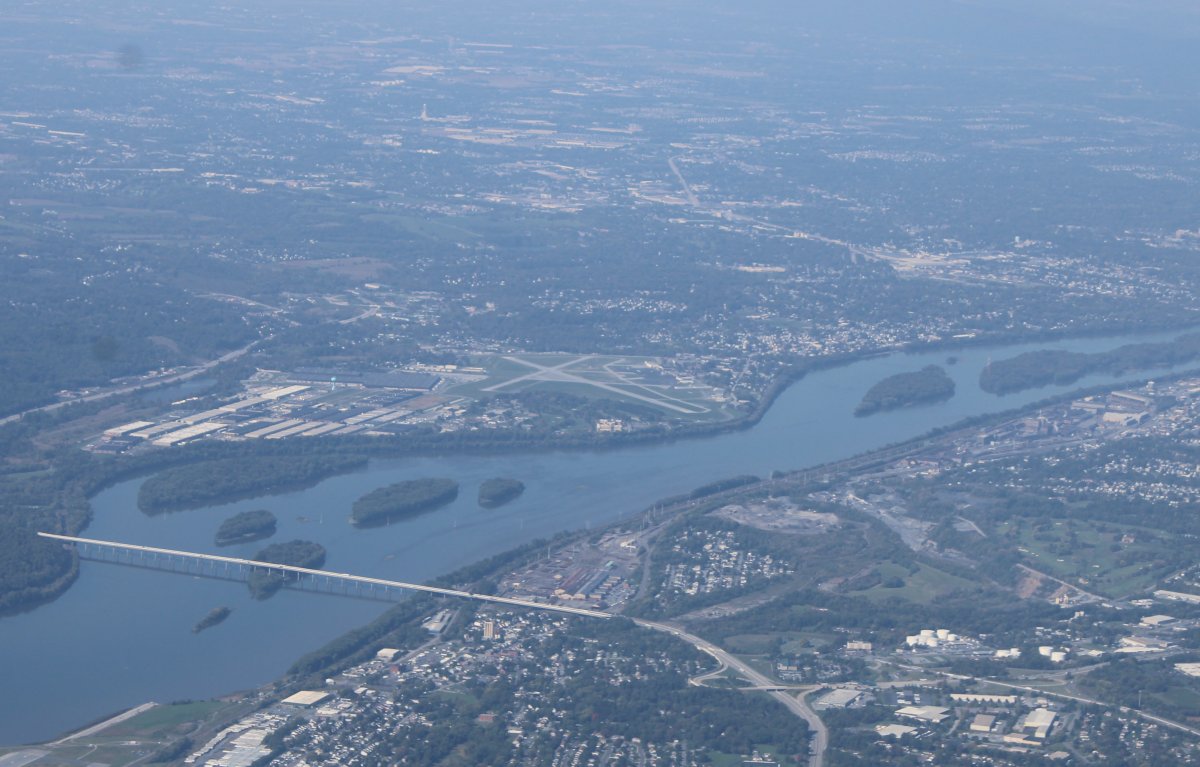 |
|
| And there is downtown Harrisburg. |
| |
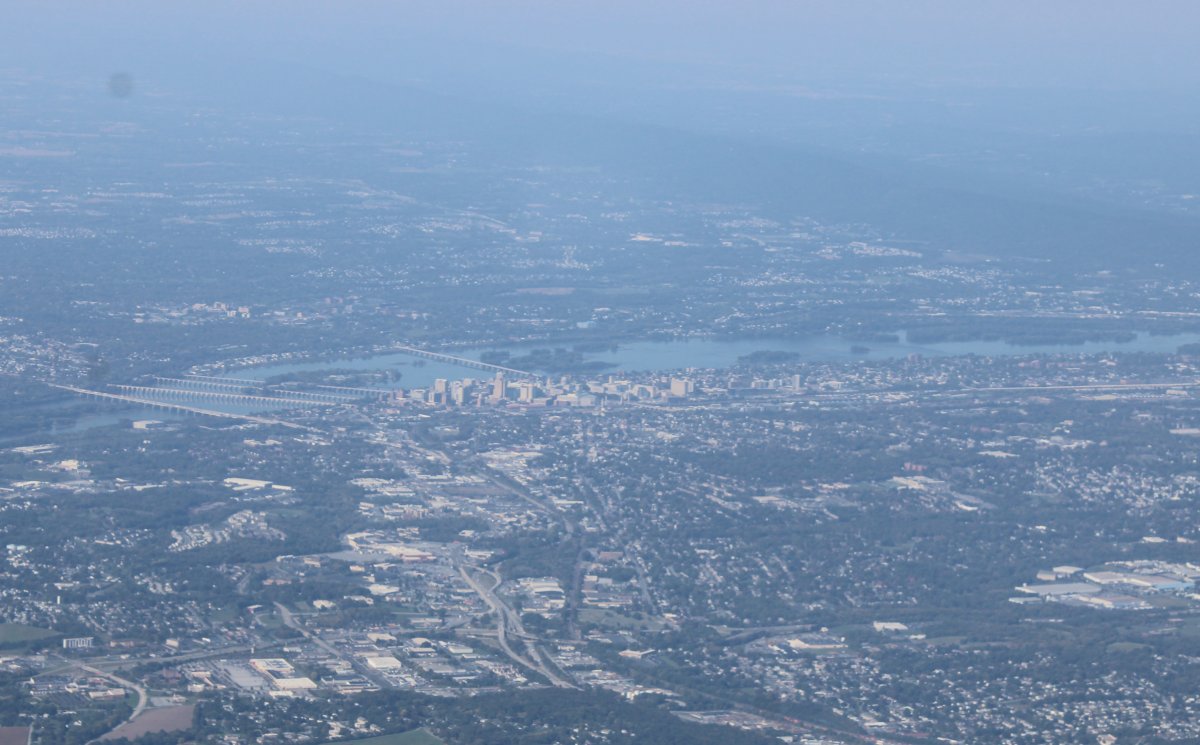 |
|
| |
| |
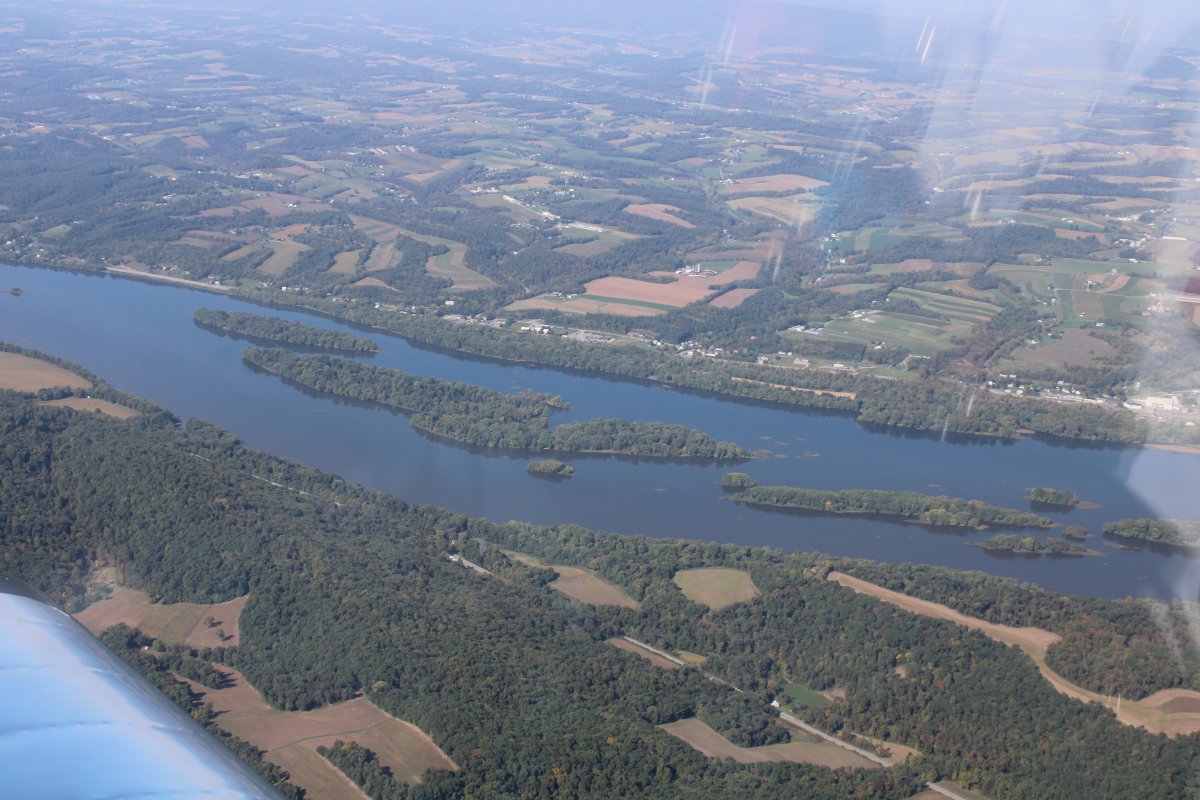 |
|
|
Looking north up the Susquehanna River with Penn Valley Airport (KSEG) on the left. I landed there a couple of months ago.
|
| |
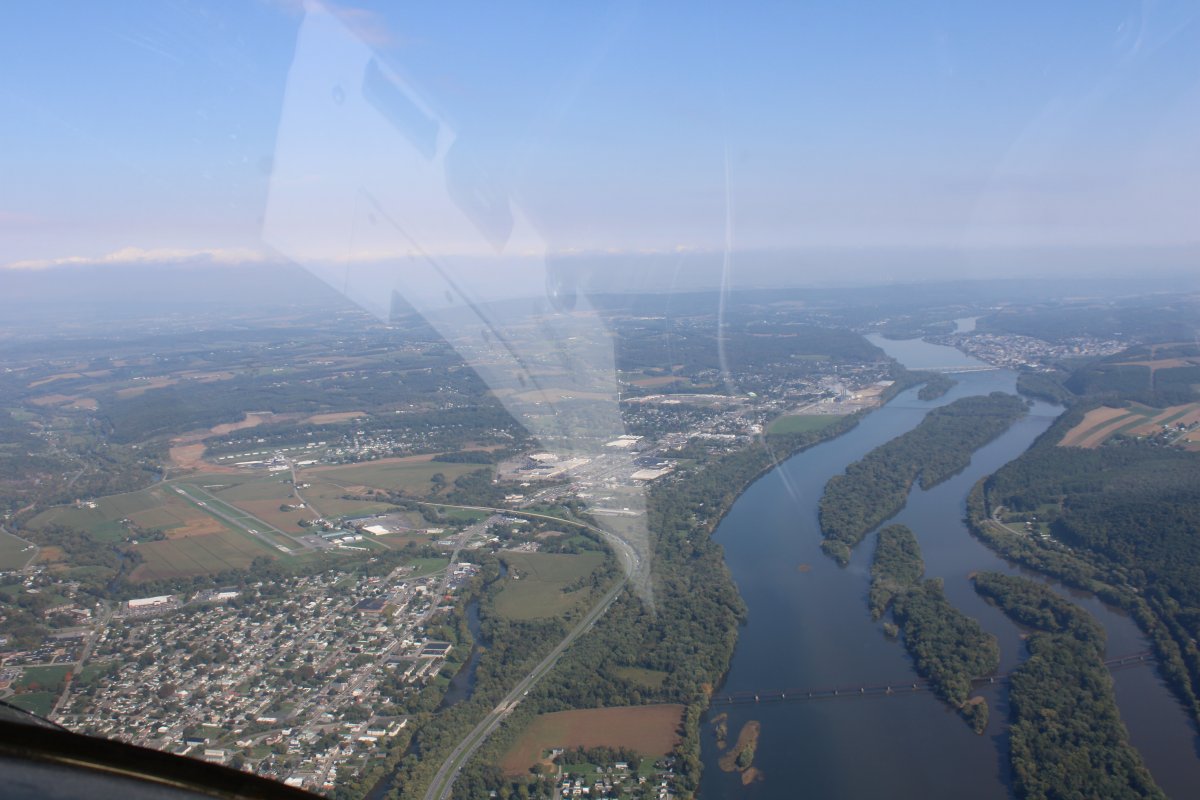 |
|
| Overhead Williamsport Regional Airport (KIPT). It's a towered airport. The approach from the south is interesting. You fly over these tree-covered ridges that run east-west. You come over the last ridge, and there it is right in front of you: the West Branch Susquehanna River and Williamsport Regional Airport. The airport was deserted. I think I woke the Tower guy up. |
| |
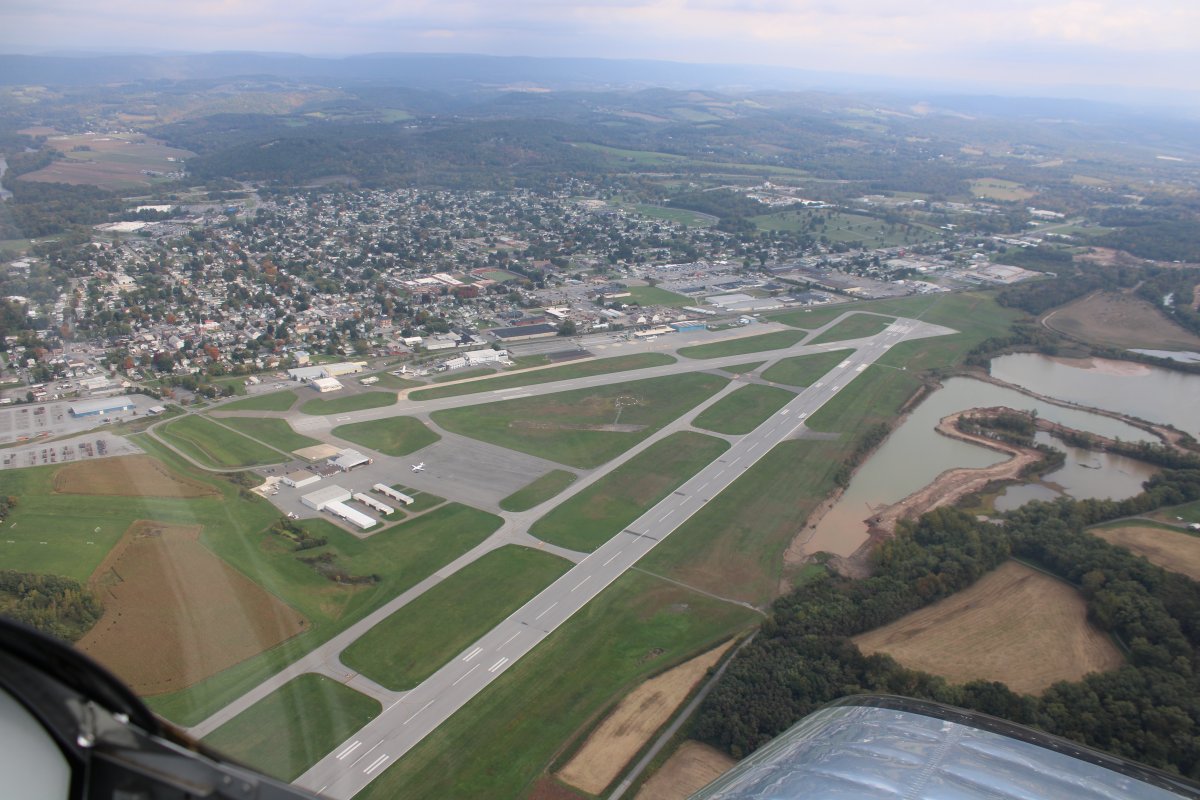 |
|
|
On right base for runway 27.
|
| |
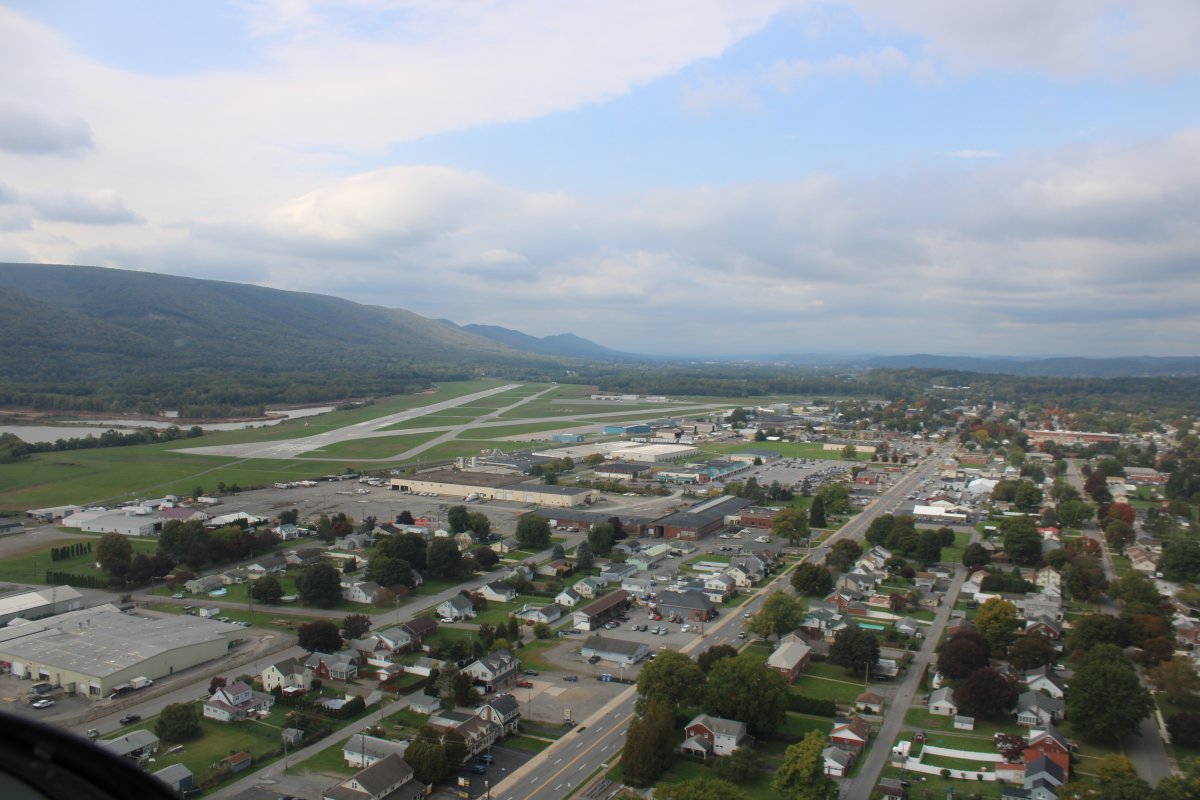 |
|
|
Rich and Nhu-An, who drove up here, picked me up at the airport and we drove to the Lycoming Engine Factory. Rich and Nhu-An are buying a Thunderbolt engine from Lycoming, hence the tour, and were nice enough to invite me.
Not surprisingly, Lycoming doesn't allow photography inside their facility, so this picture is all you'rr going to see. Let me say that the tour was very interesting, and I was impressed with how Lycoming builds their engines.
|
| |
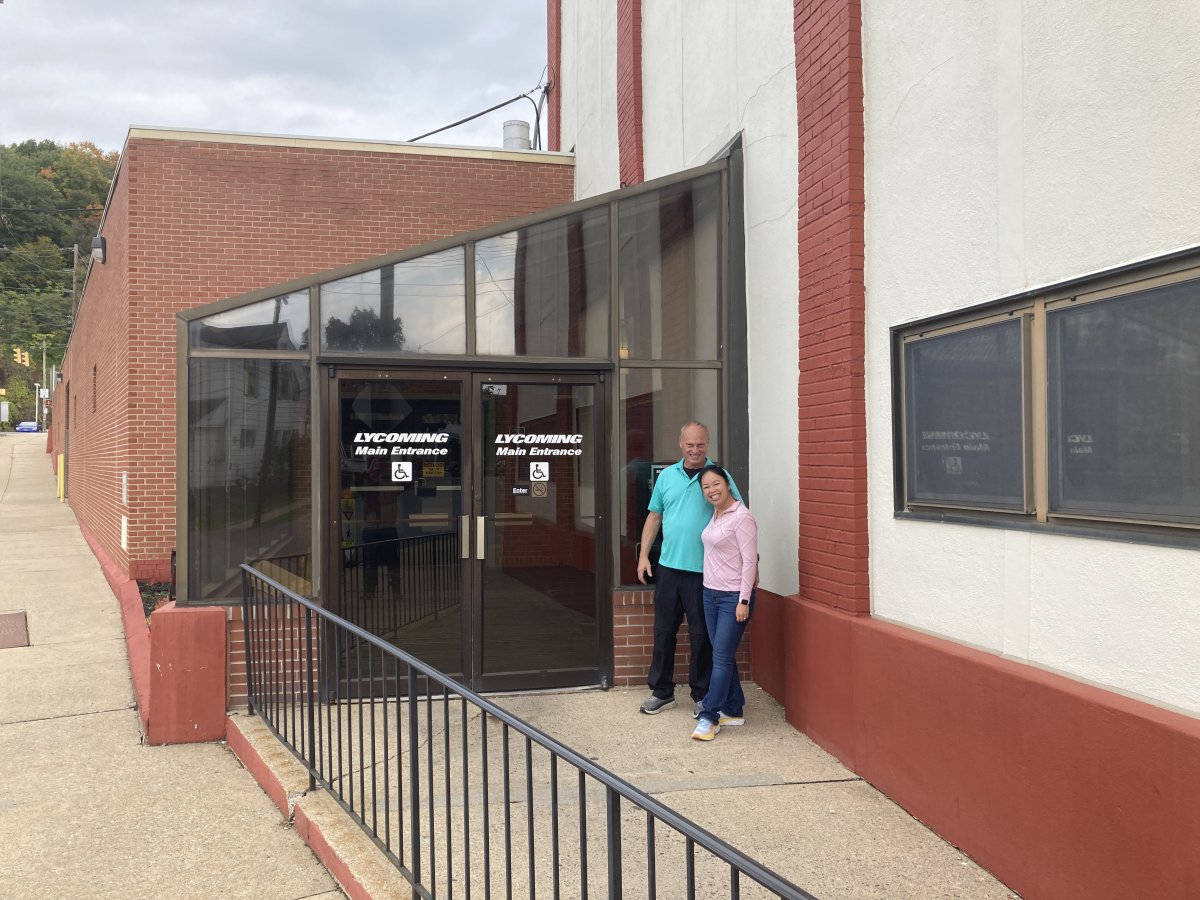 |
|
|
Passing by the facility after the tour.
Lycoming produces a line of horizontally opposed, air-cooled, four, six and eight-cylinder engines including the only FAA-certified aerobatic and helicopter piston engines on the market.
The company has built more than 325,000 piston aircraft engines and powers more than half the world's general aviation fleet, both rotary and fixed wing. Lycoming is an operating division of Avco Corporation, itself a subsidiary of Textron.
|
| |
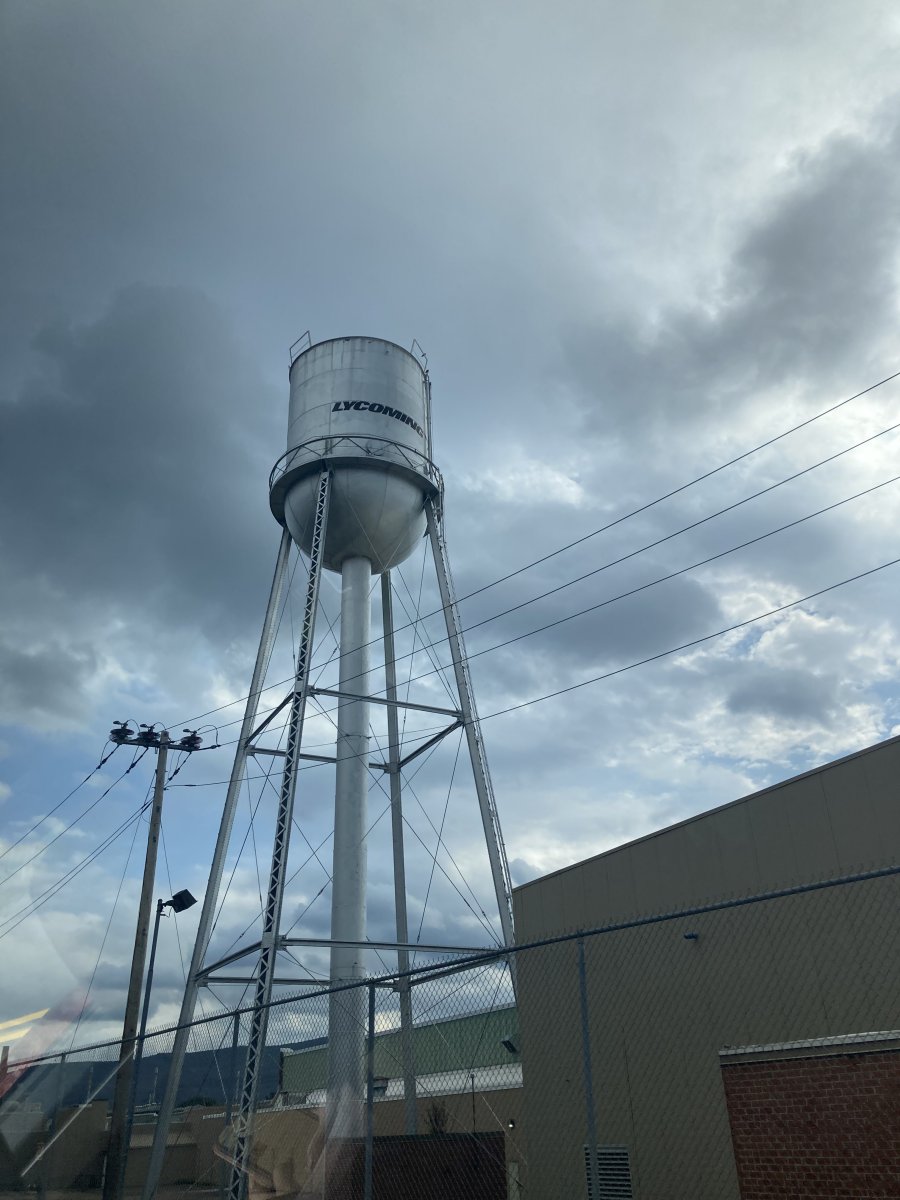 |
|
| Not much to see from the outside. |
| |
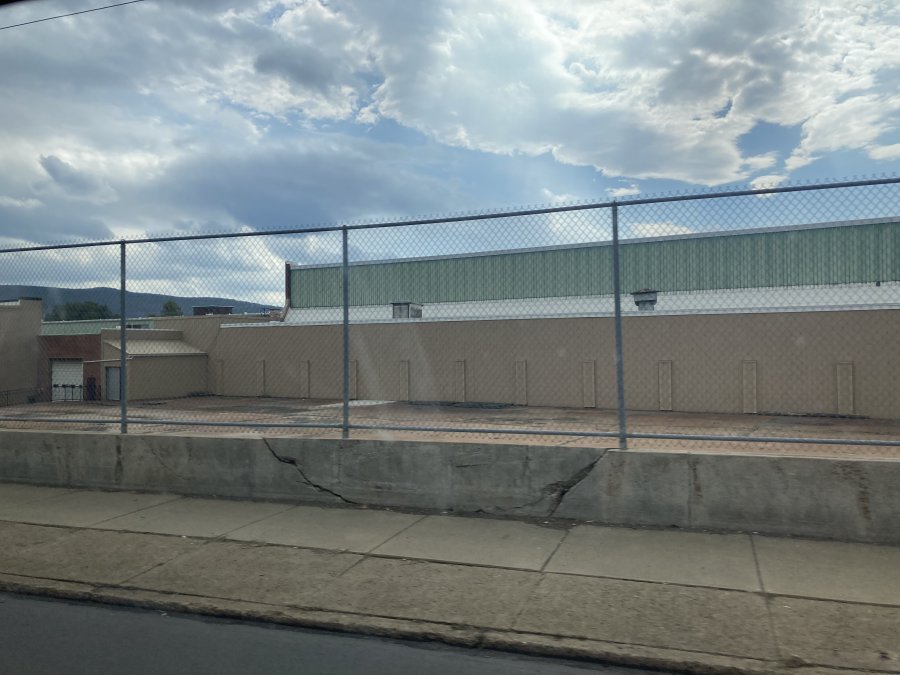 |
|
|
We had lunch in downtown Williamsport, then Rich and Nhu-An dropped me back off at the airport. Besides the Lycoming Factory, Williamsport's other big claim to fame is as the birthplace of Little League Baseball and home to the Little League World Series.
|
| |
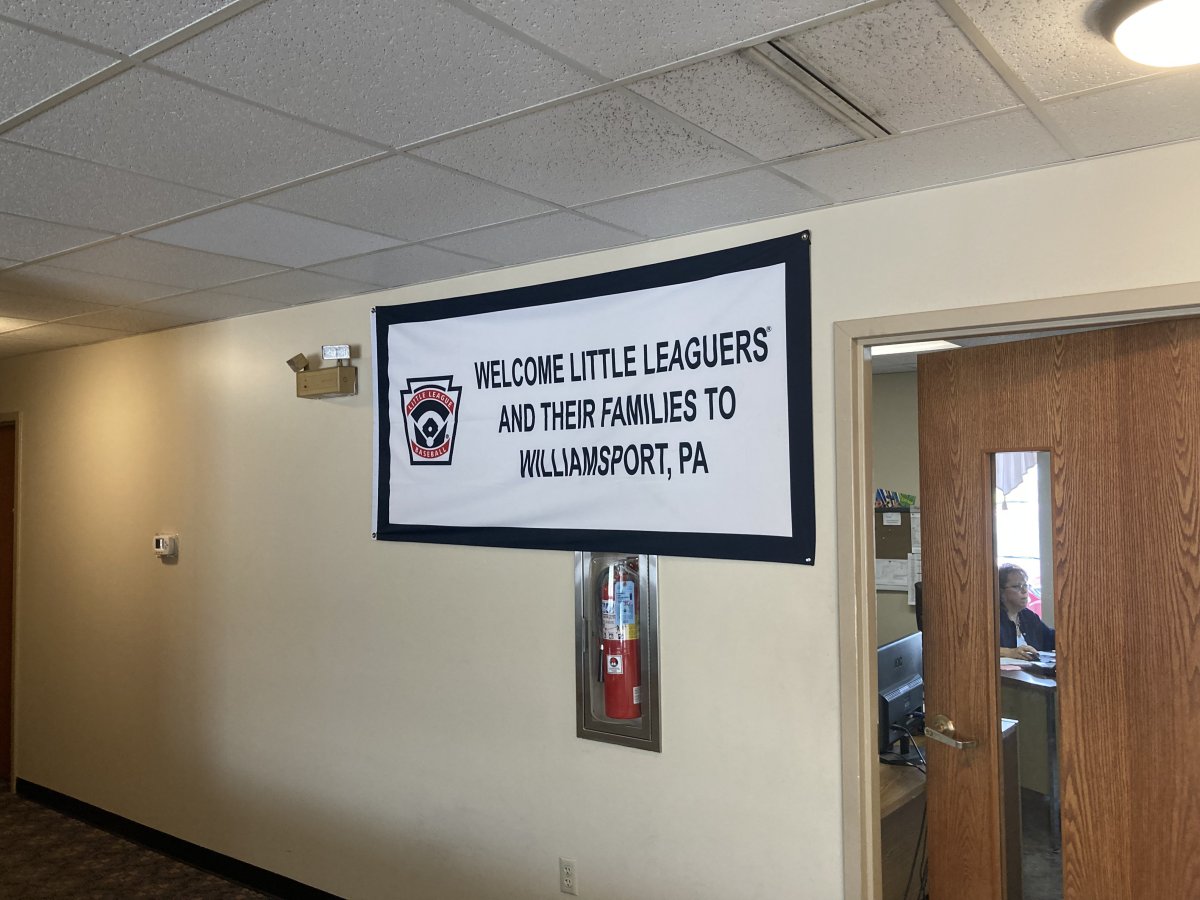 |
|
| A picture of the Little League World Series I assume. |
| |
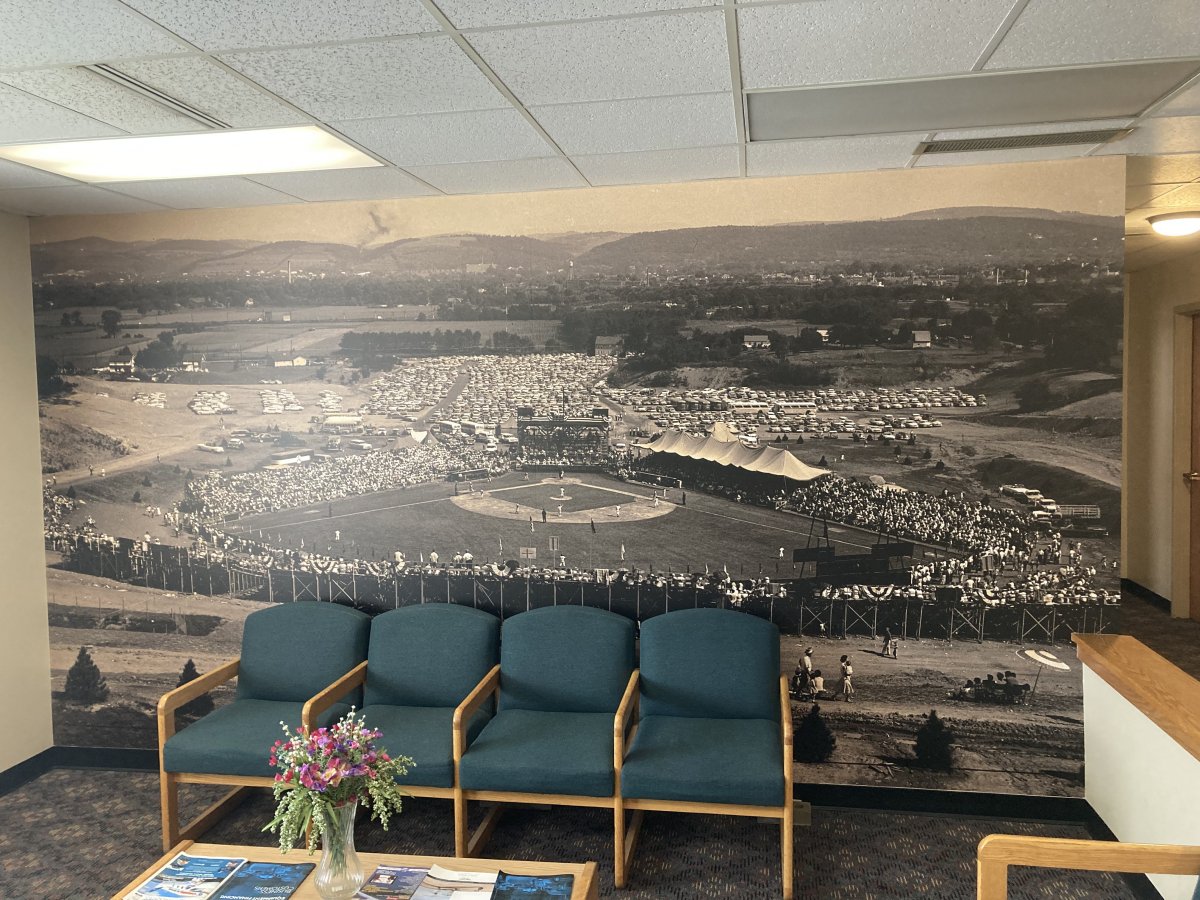 |
|
|
My plane sits by its lonely self on the ramp.
|
| |
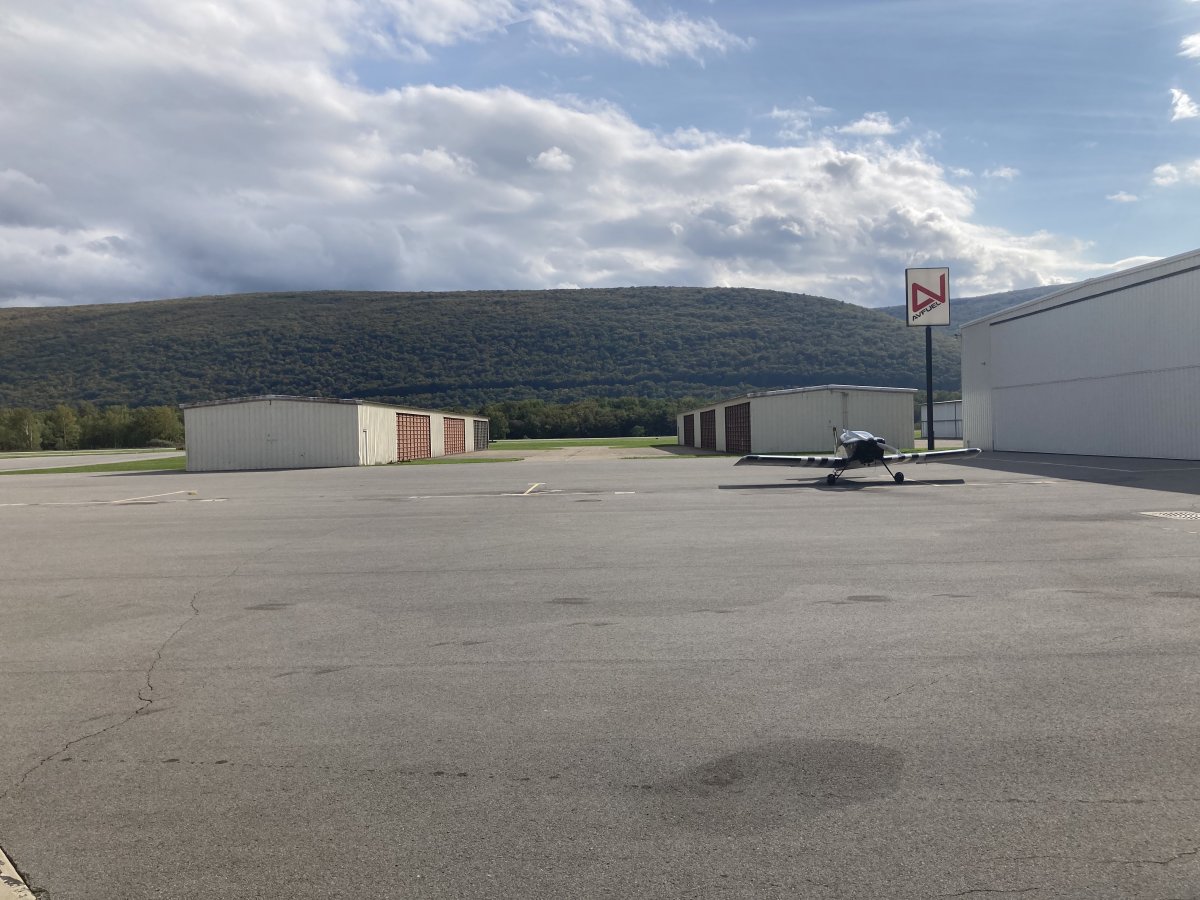 |
|
| A corporate jets sits on the ramp, with its turbines rotating slowly in the wind. |
| |
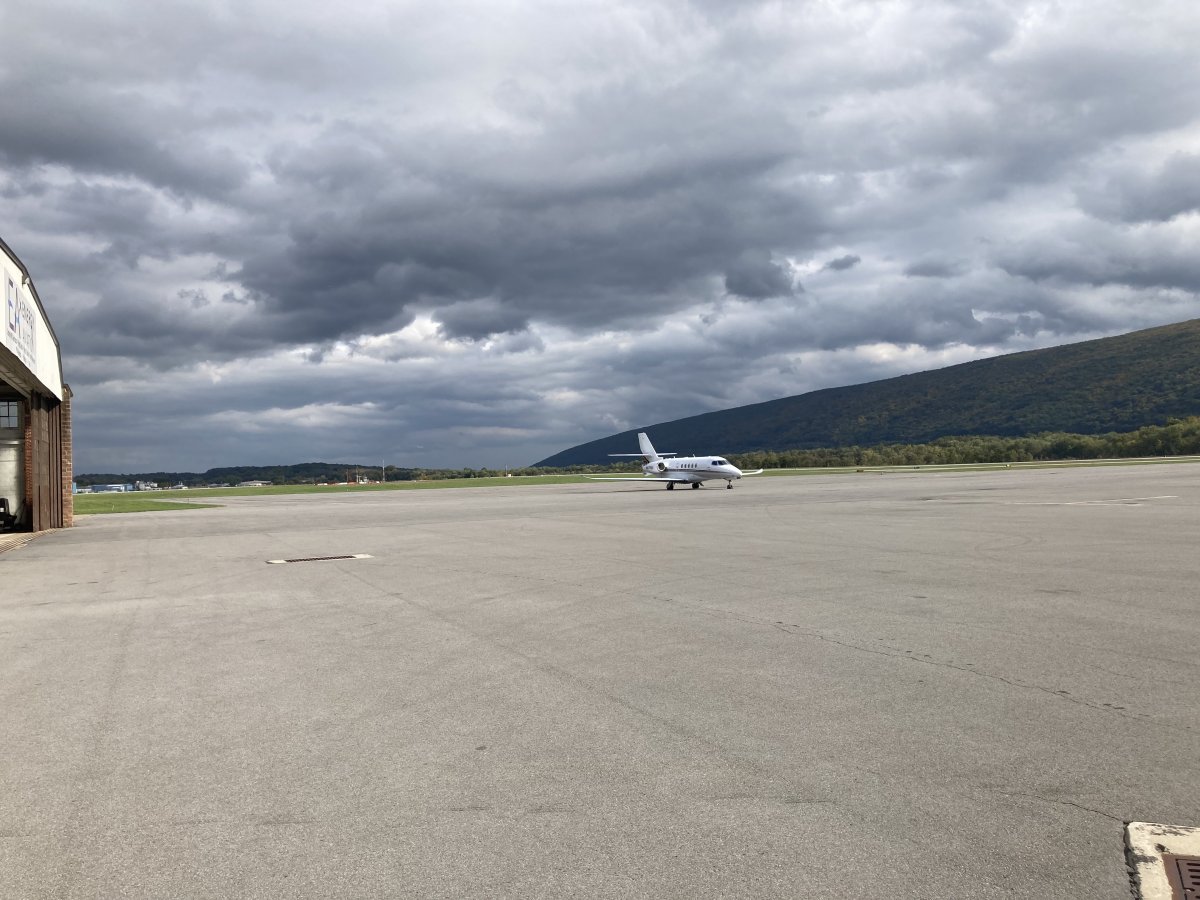 |
|
| The Executive Air Terminal/FBO Building. |
| |
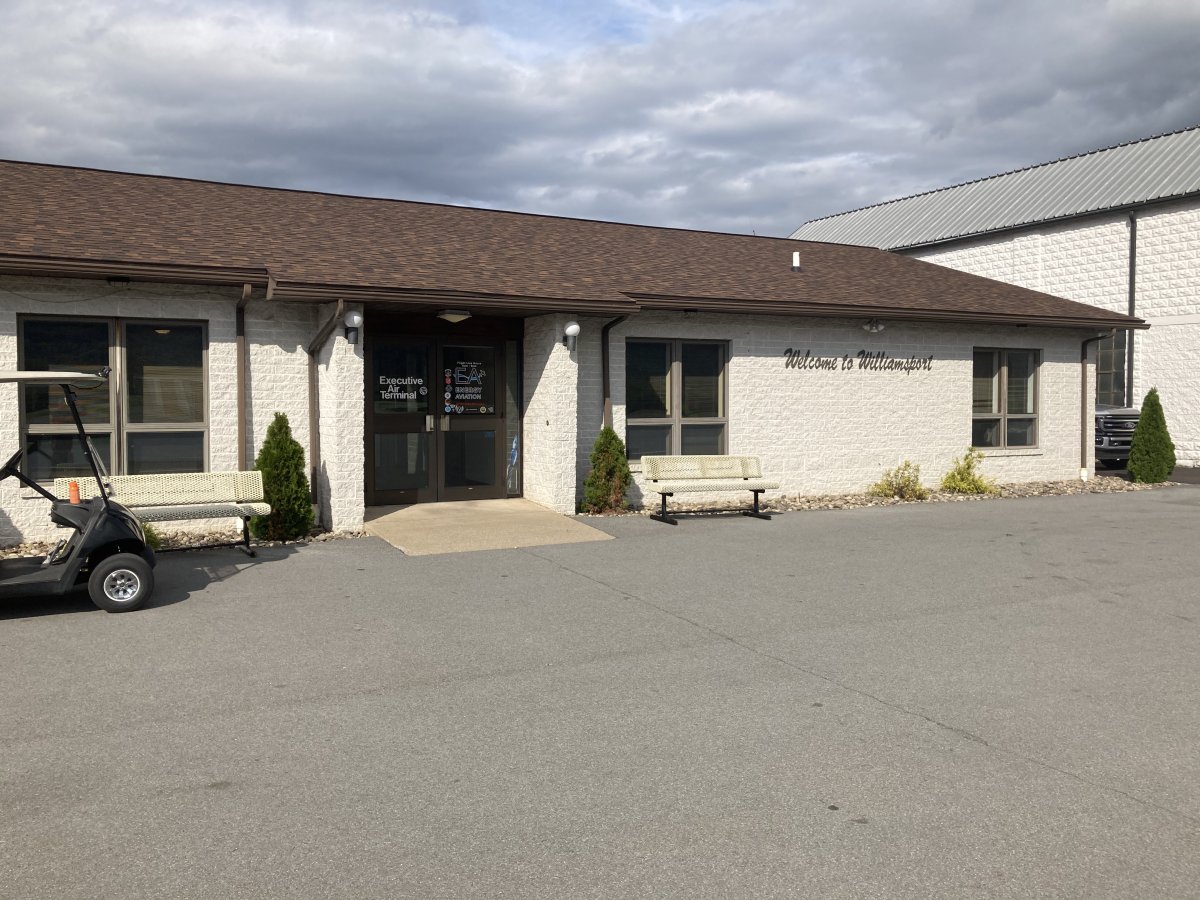 |
|
| Looking out over the airport which was very quiet. The airport is not currently served by a commercial airline despite a relatively new terminal building (built in 2018). |
| |
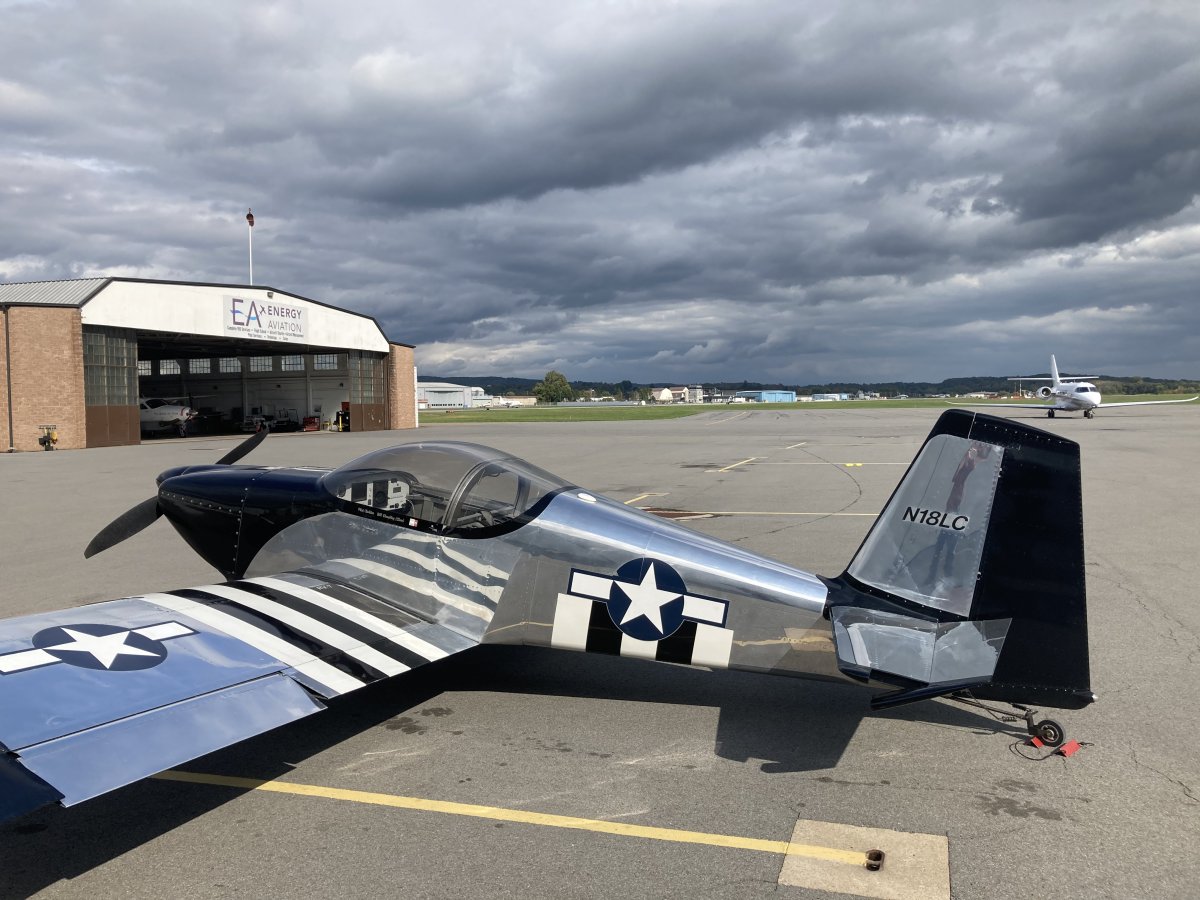 |
|
|
|
| |
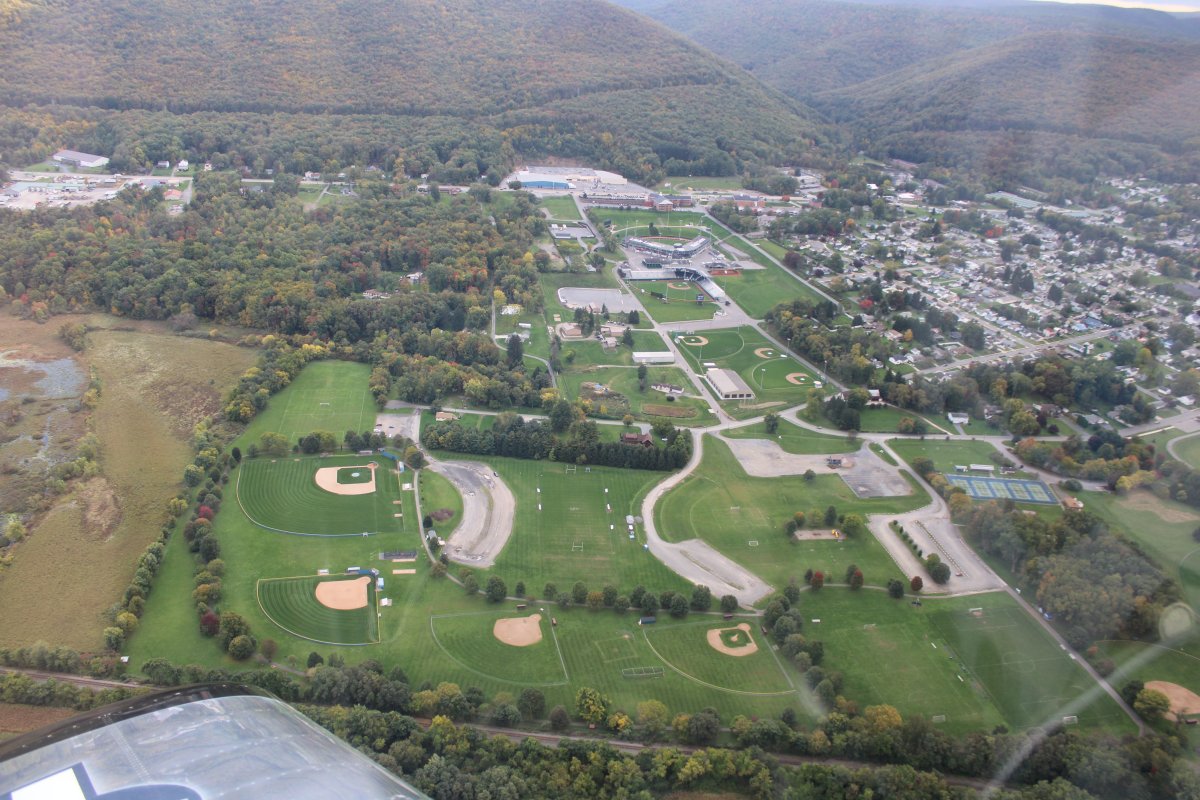 |
|
|
A close-up of the Howard J. Lamade Stadium where the Little League World Series is played.
|
| |
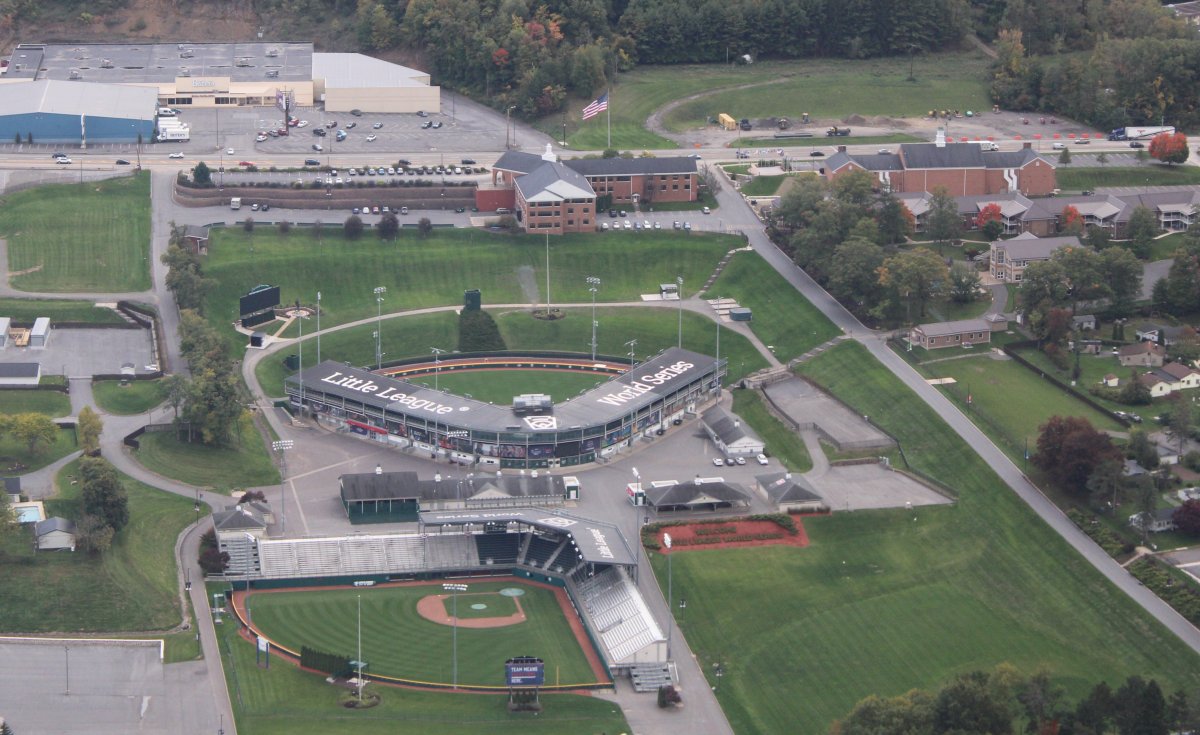 |
|
| Looking at the north side of the river at downtown Williamsport. |
| |
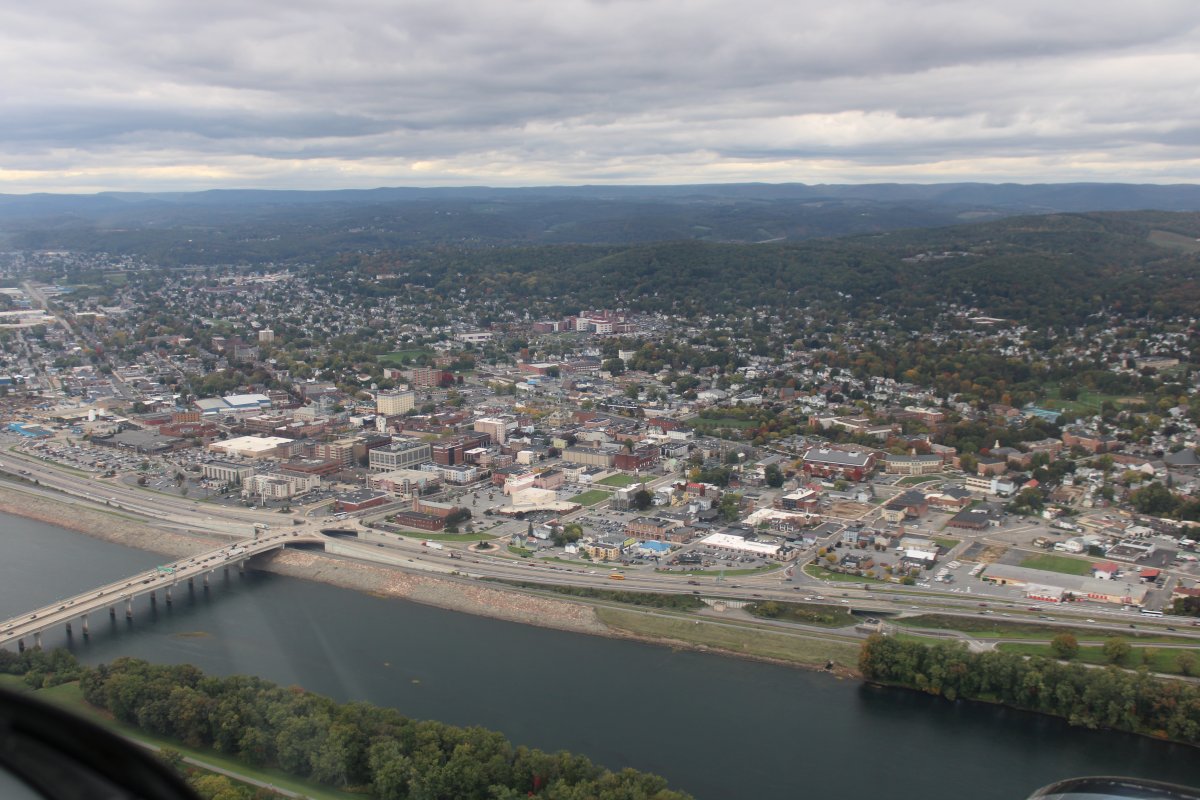 |
|
| Close-up. |
| |
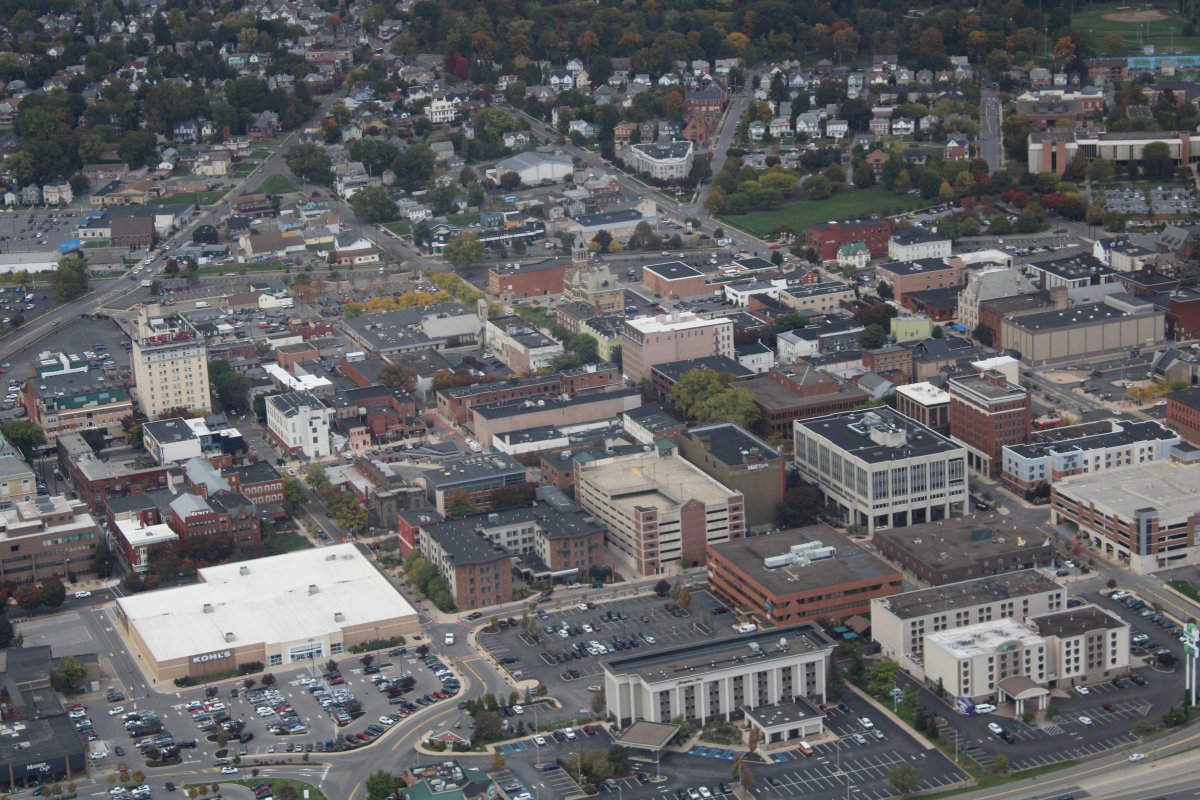 |
|
| Continuing on, on the north side of the river is the Lycoming Engine Factory. We toured the long building at top. I can confirm that it is long, because we walked the entire thing. We didn't go into the square-shaped building at lower left. I assume that is part of the Lycoming Engine Factory but don't know for sure. |
| |
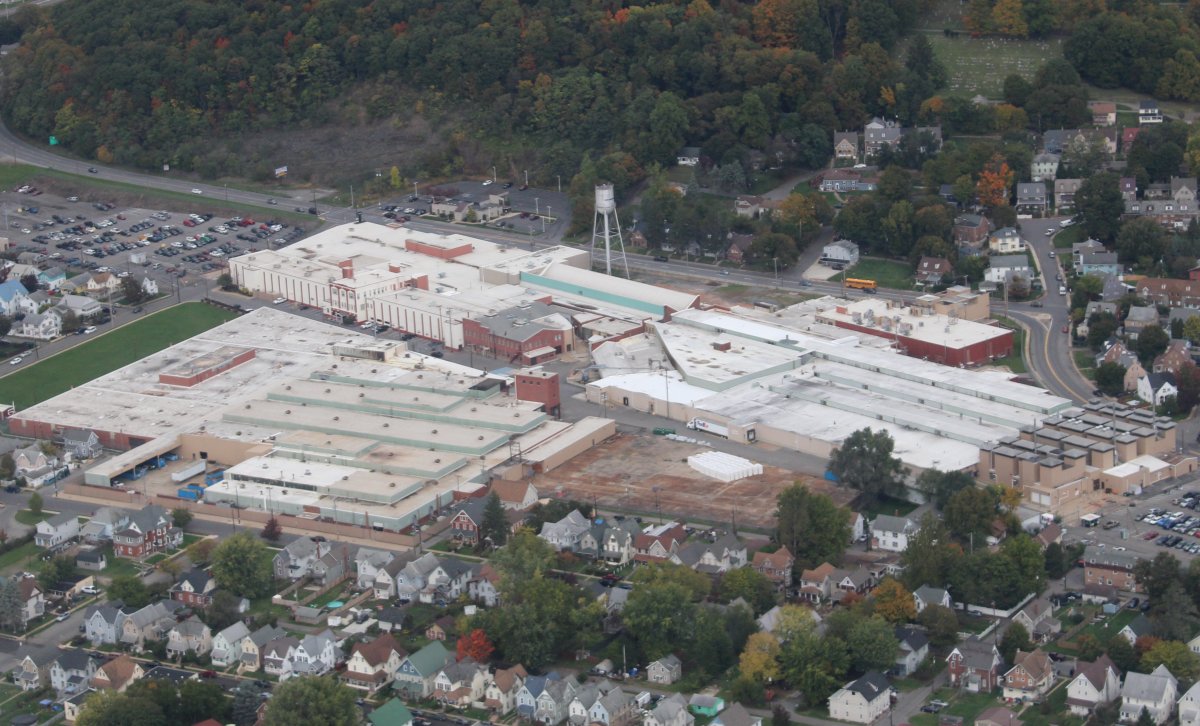 |
|
|
Another look at the Lycoming Engine Factory.
|
| |
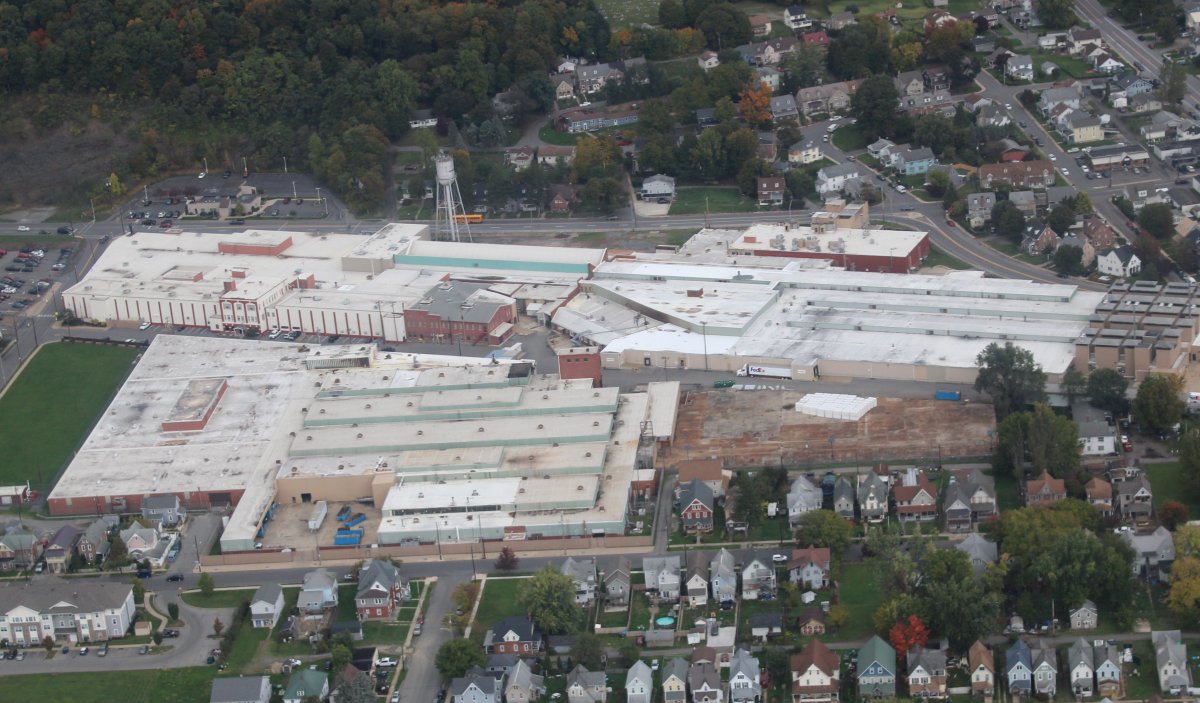 |
|
| Just west of the Lycoming Engine Factory is Muncy Bank Ballpark at Bowman Field, a minor league baseball stadium and home to the Williamsport Crosscutters, a collegiate summer baseball team of the MLB Draft League. Since 2017, Bowman Field has been used for a regular-season Major League Baseball (MLB) game, the MLB Little League Classic, held each August during the Little League World Series. The stadium seats just over 2,000 fans and is considered one of the most pristine baseball venues worldwide. The major leaguers spend the day interacting with the teams participating in the ongoing Little League World Series before taking the field themselves for their own Sunday night showdown. This year the Baltimore Orioles played the Boston Red Sox on August 21. |
| |
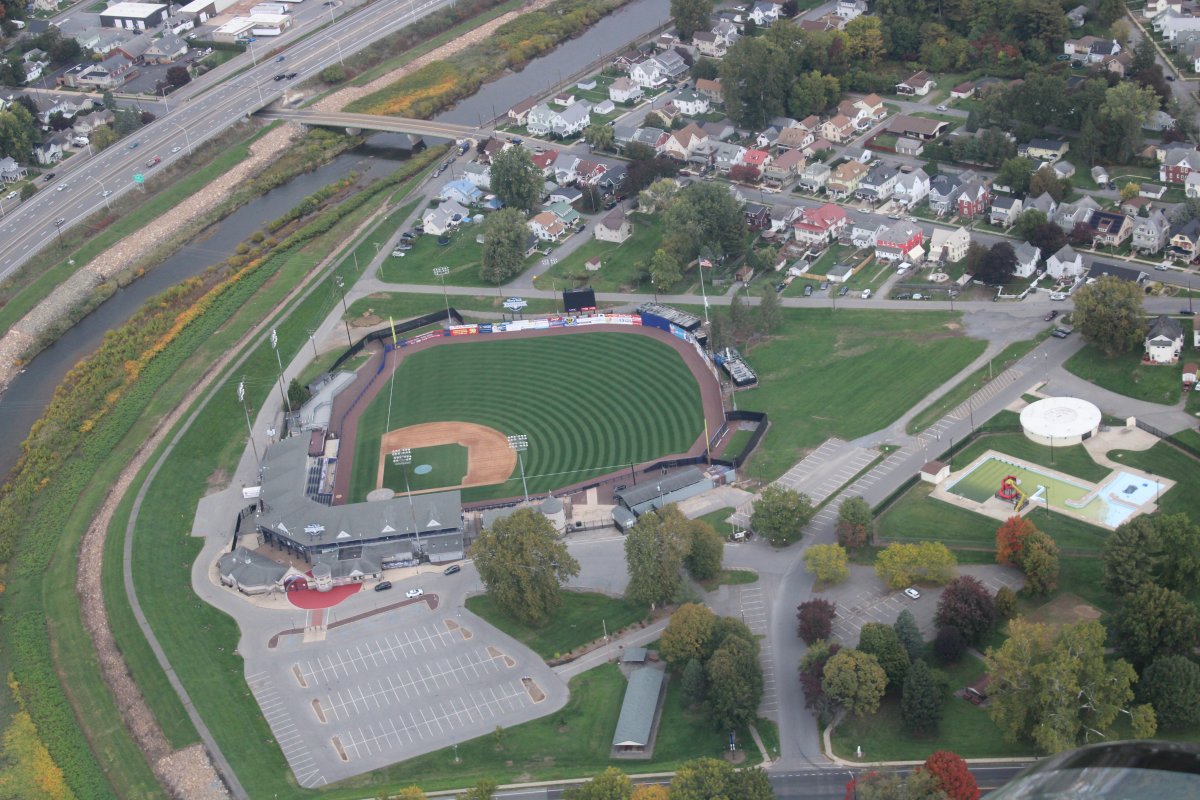 |
|
|
Flying by the Williamsport Area High School with the unusual team name of "Millionaires".
|
| |
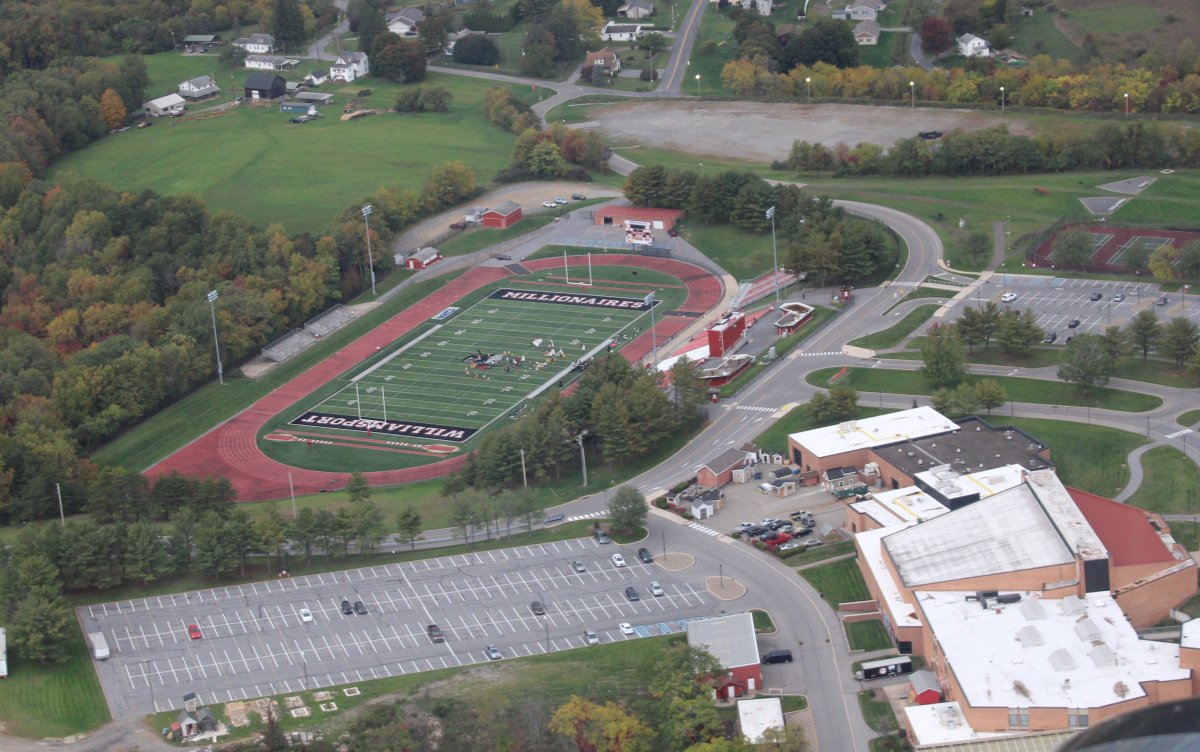 |
|
| I continued heading west. Jersey Shores grass strip airport (P96) is in view at center. I landed there for the first time a month ago. |
| |
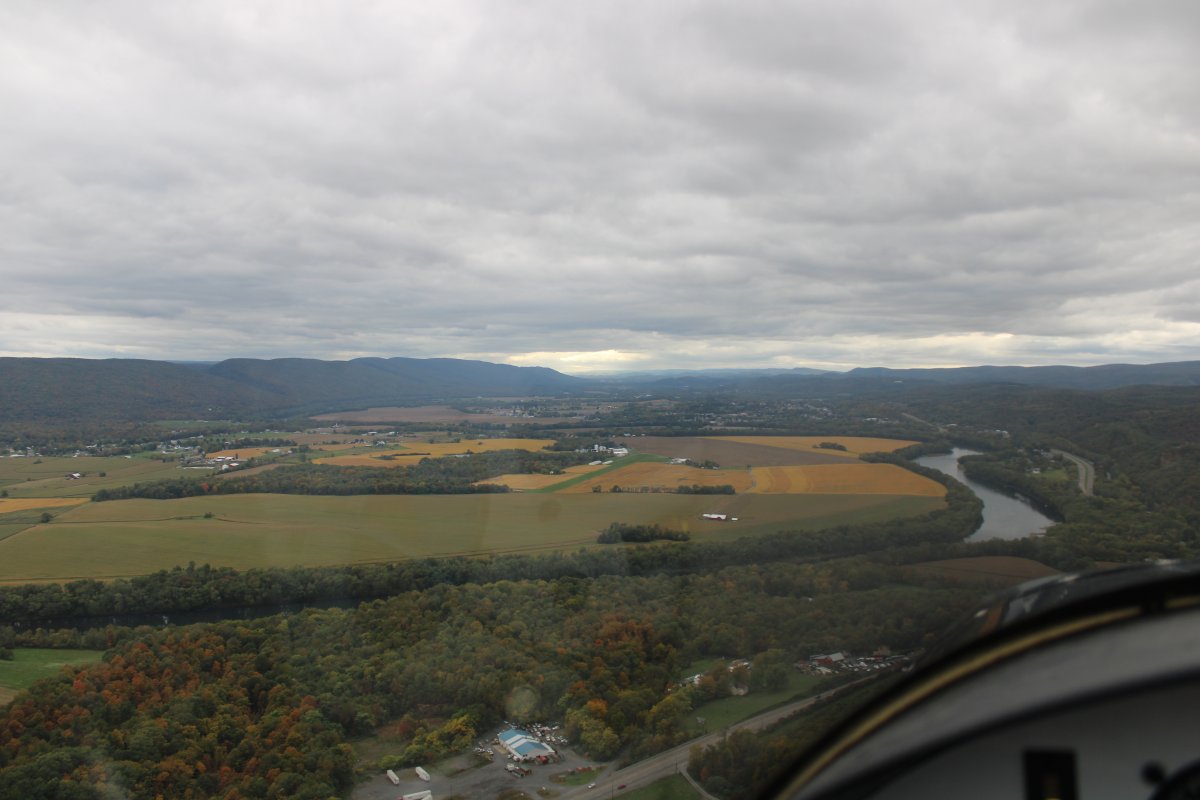 |
|
| A closer look at Jersey Shores. Nobody flying there today. The powered-parachute operation is long-gone. |
| |
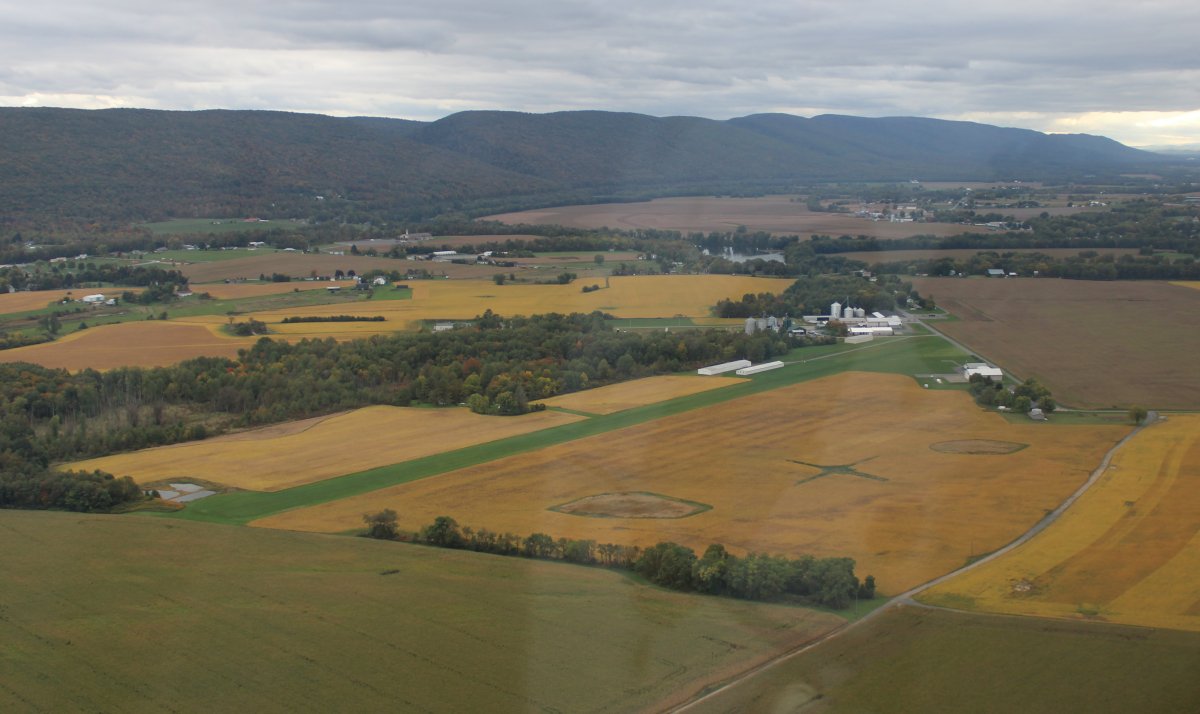 |
|
| But the "Campbulance" is still there for some reason. Hope it didn't break down. |
| |
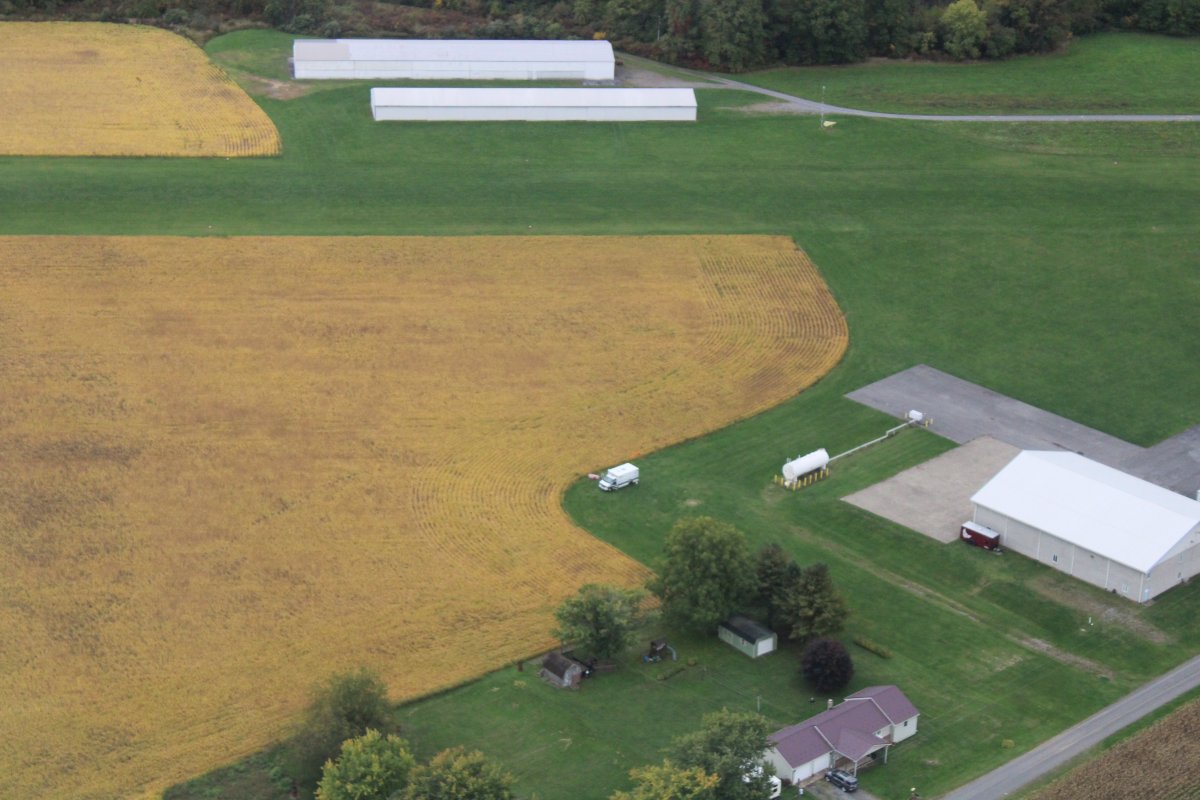 |
|
|
The little town of Jersey Shore. It is named Jersey Shore because the founding family had relocated here from New Jersey.
|
| |
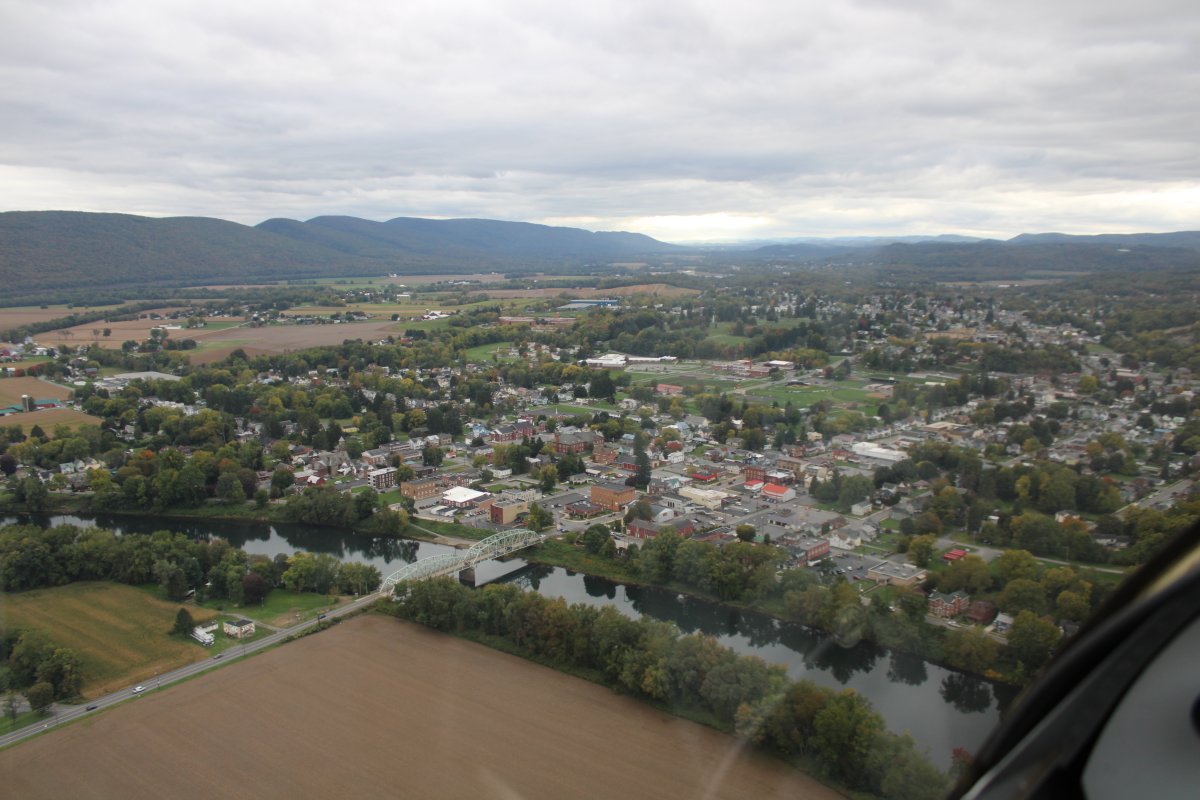 |
|
|
The entrance to the Pennsylvania Grand Canyon is just north of Jersey Shore so of course I had to check it out. I would have flown it had the foliage been colorful.
|
| |
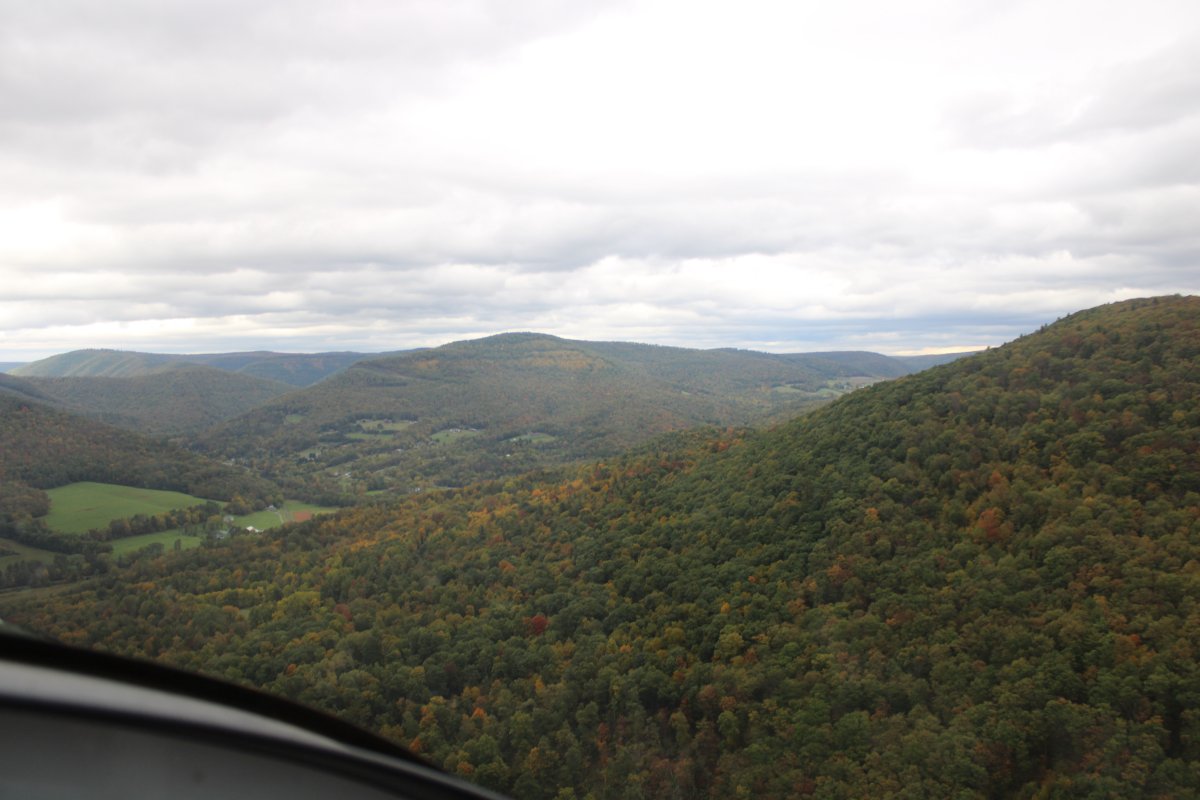 |
|
|
Clearly, it's too early for the good color.
|
| |
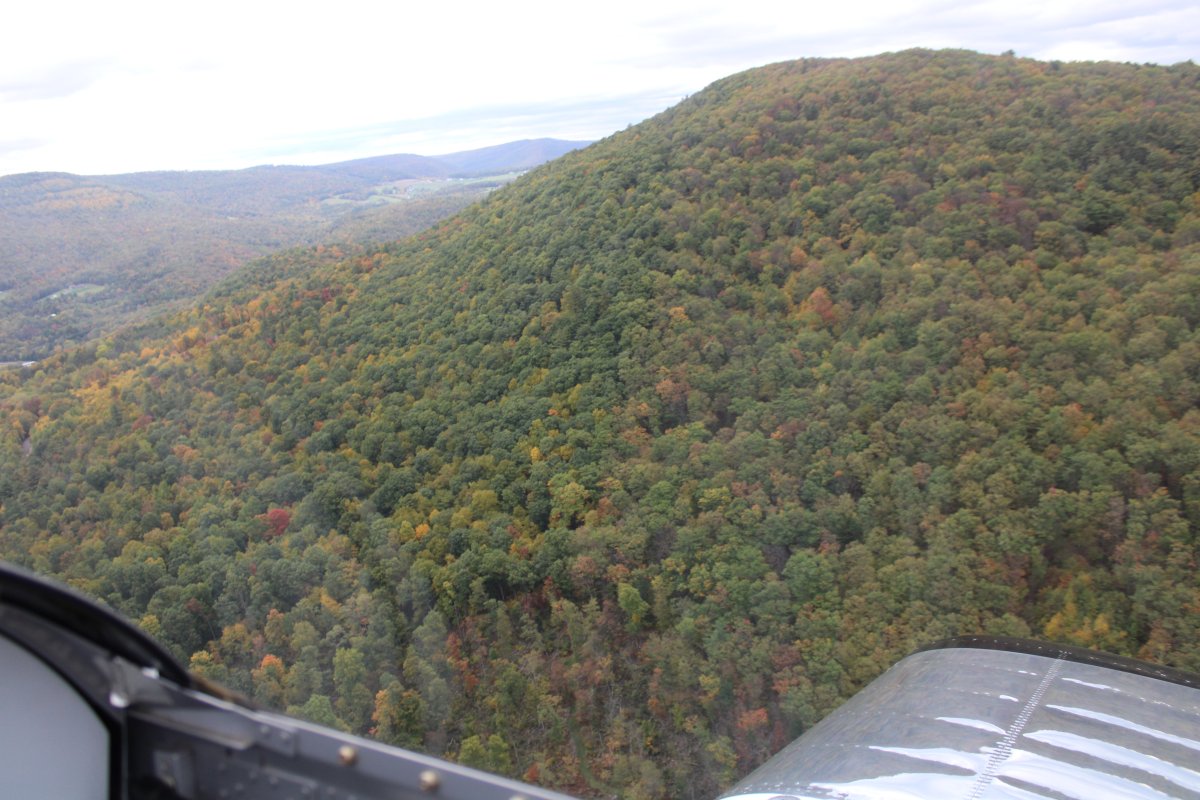 |
|
| The Pennsylvania Grand Canyon was carved out by Pine Creek, pictured below. I decided not to fly the Canyon because of low color and bumpy air. I turned around in this little valley. |
| |
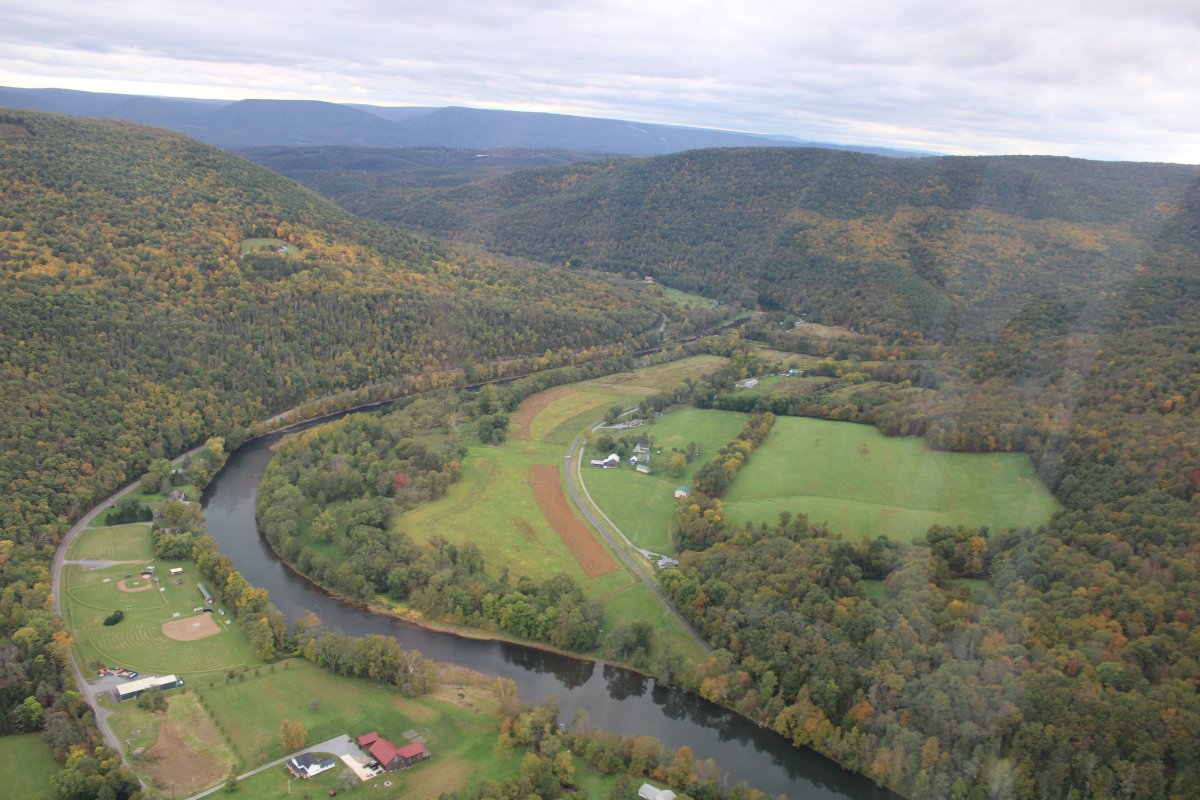 |
|
| Now heading south, and looking east, about to cross the West Branch Susquehanna River. |
| |
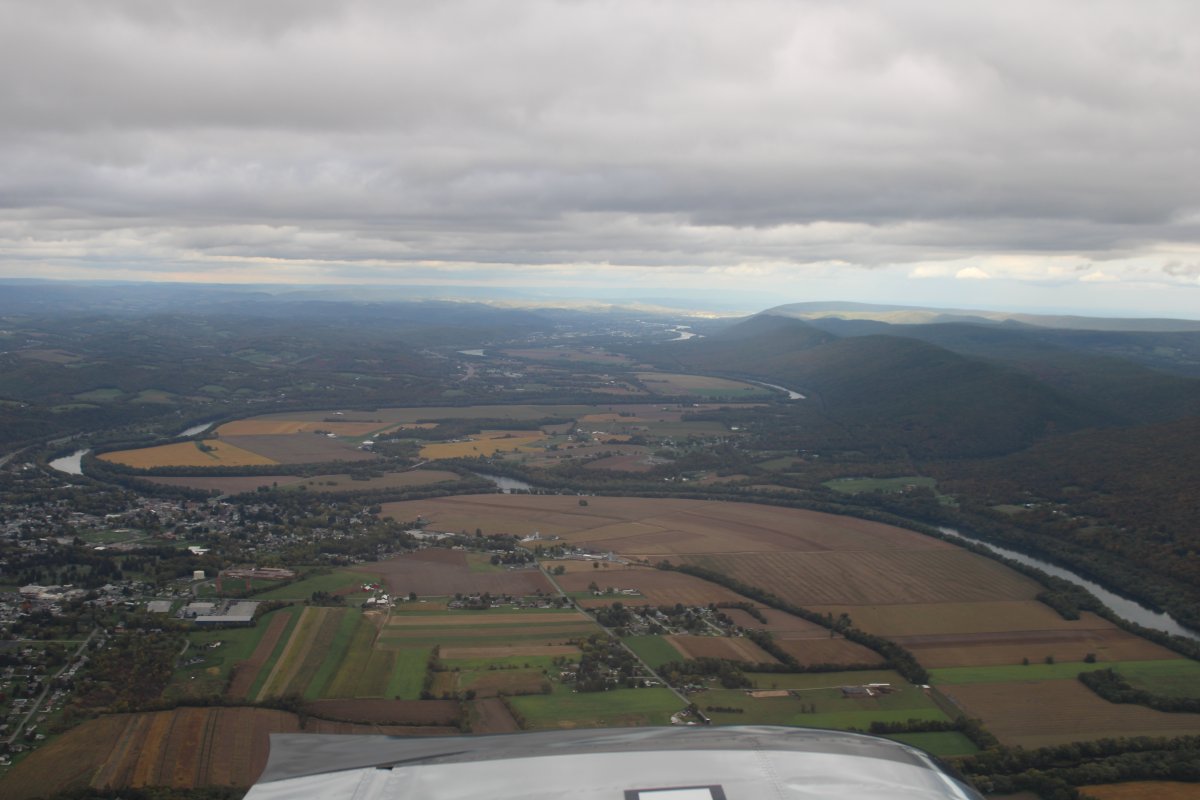 |
|
| Looking west with Loch Haven in the distance. |
| |
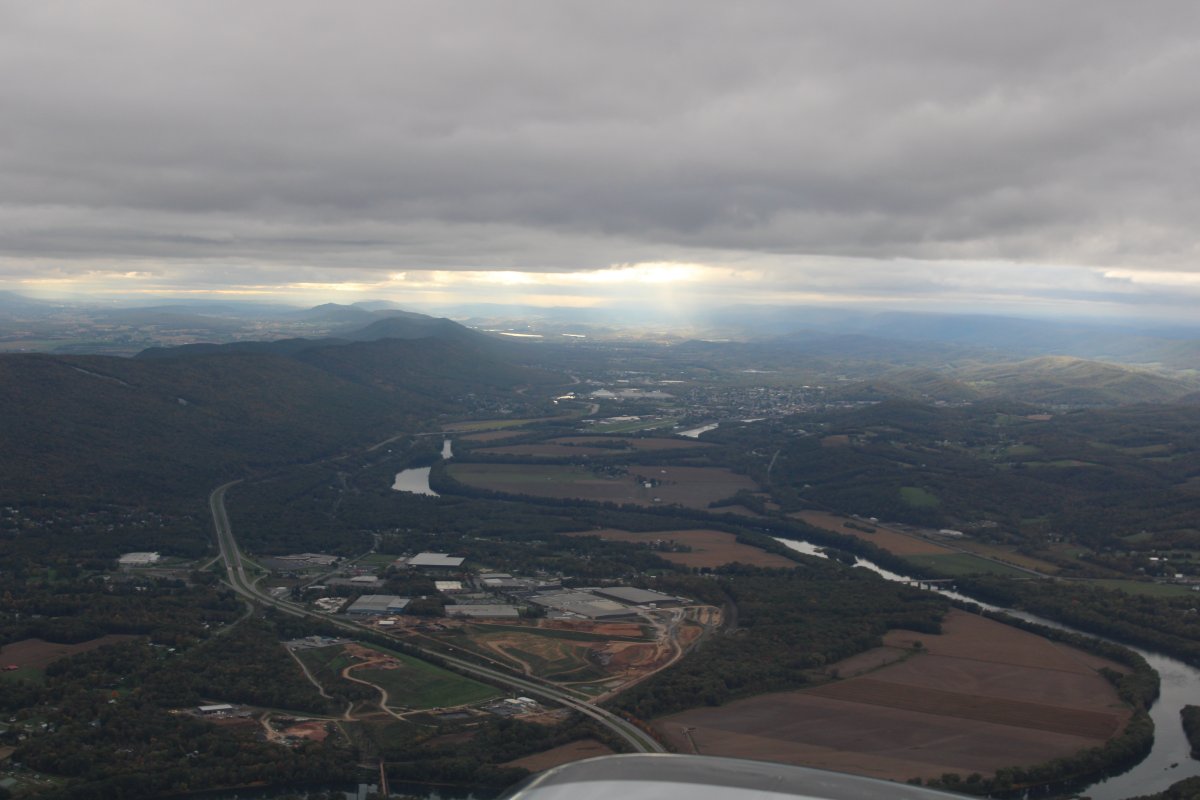 |
|
|
It was kind of overcasty but not anything to worry about.
|
| |
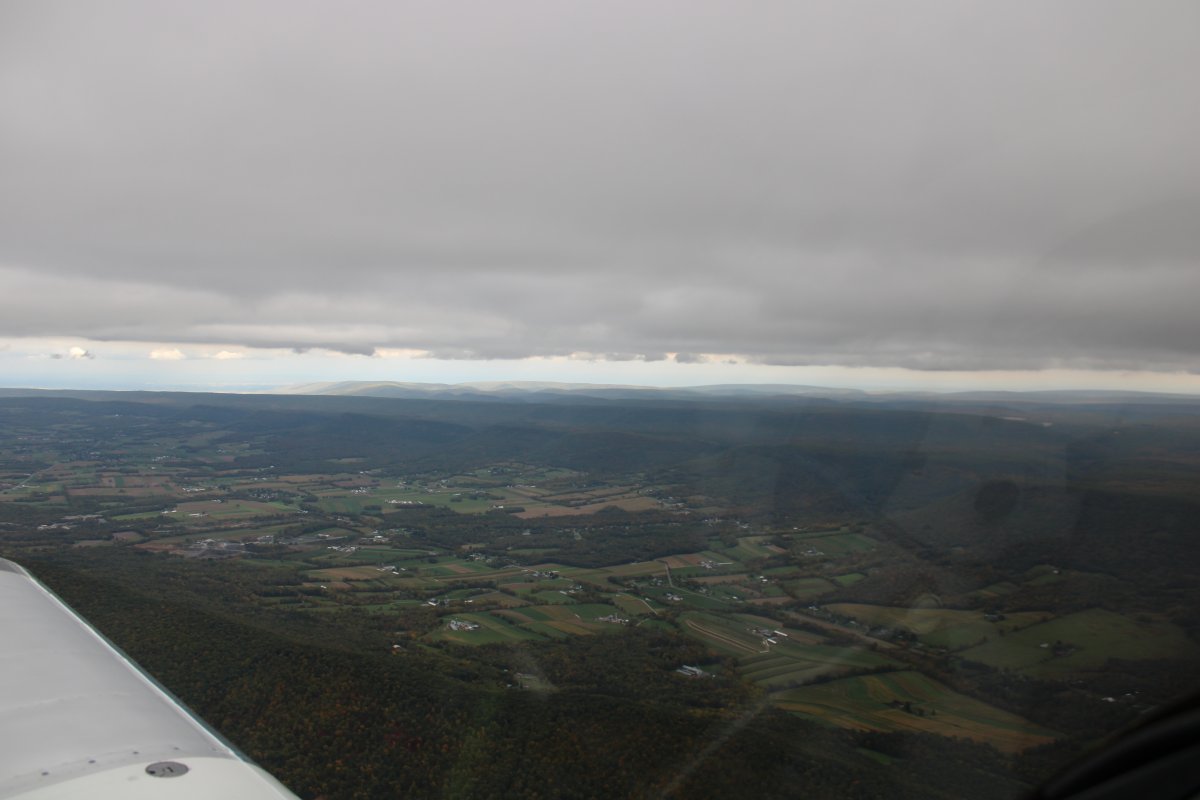 |
|
| Passing over Interstate 80. |
| |
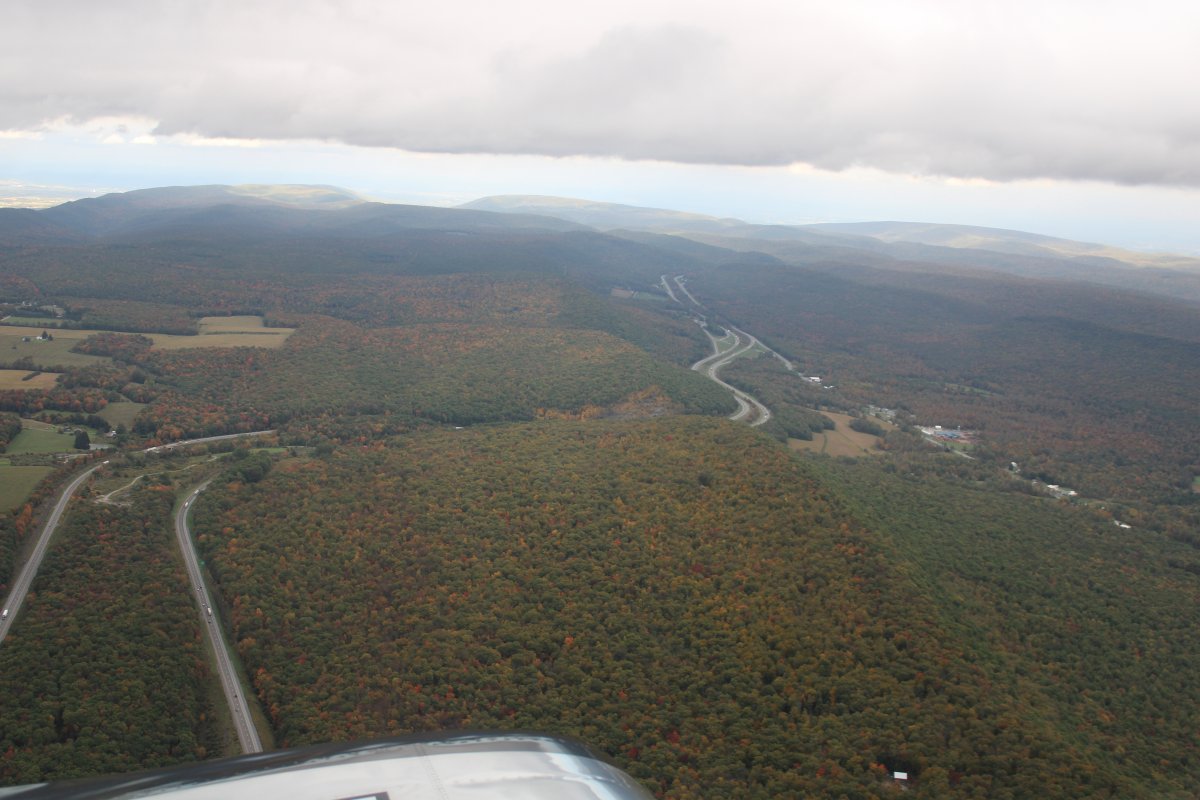 |
|
|
There was some color at the top of these ridges.
|
| |
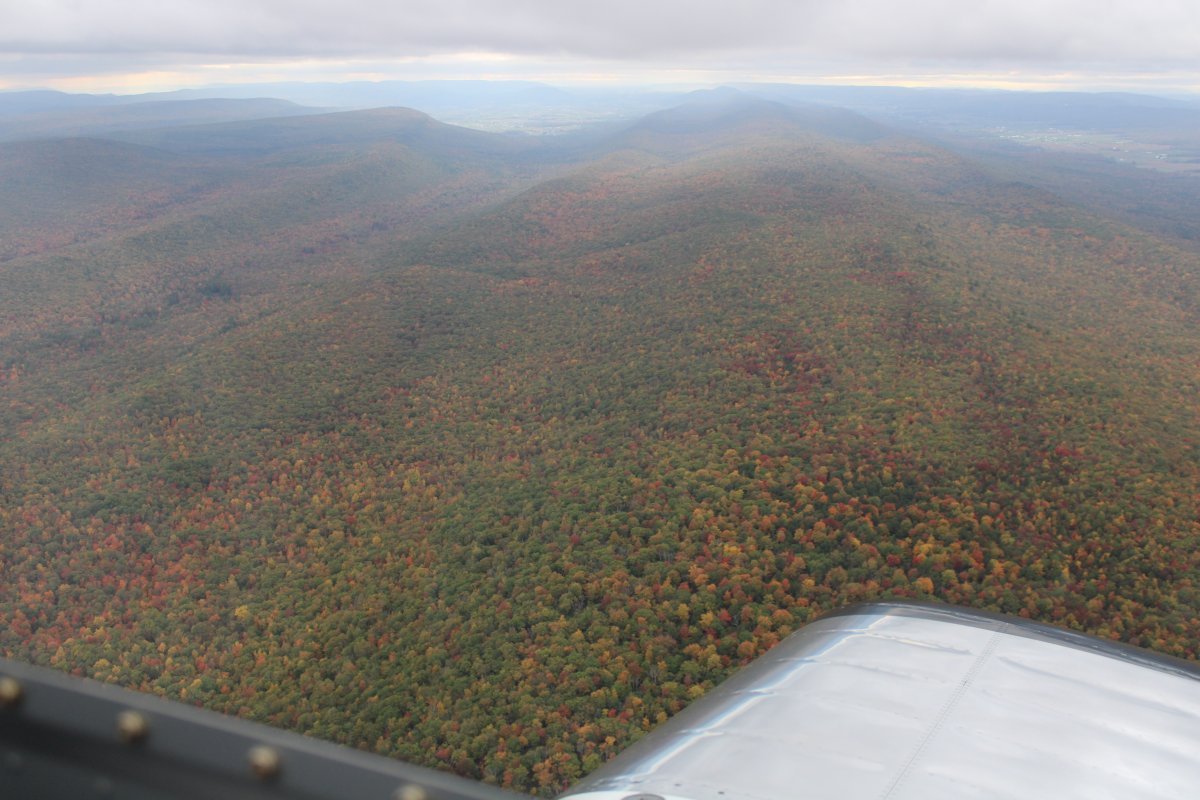 |
|
| So I descended to have a closer look. The air was kind of turbulent down low so it wasn't as enjoyable as it could have been. |
| |
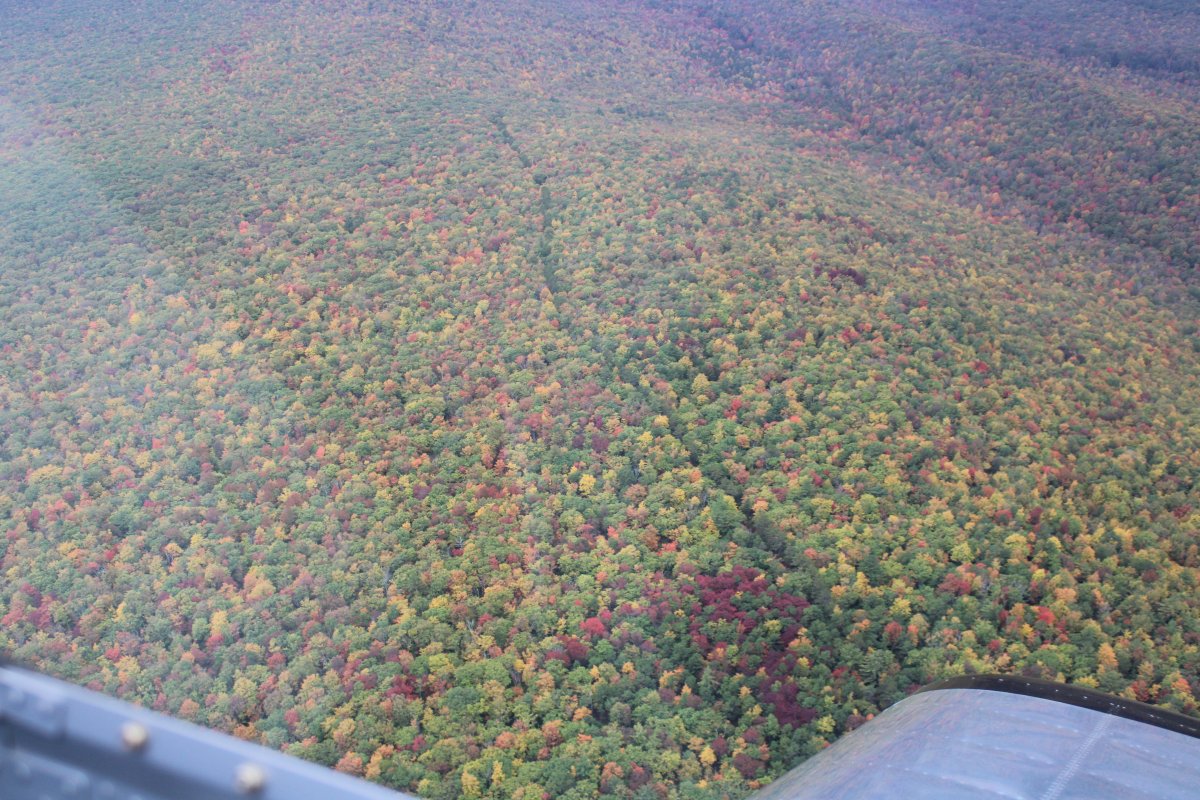 |
|
| A huge quarry just to the east of Interstate 83 coming into Towson and Baltimore. |
| |
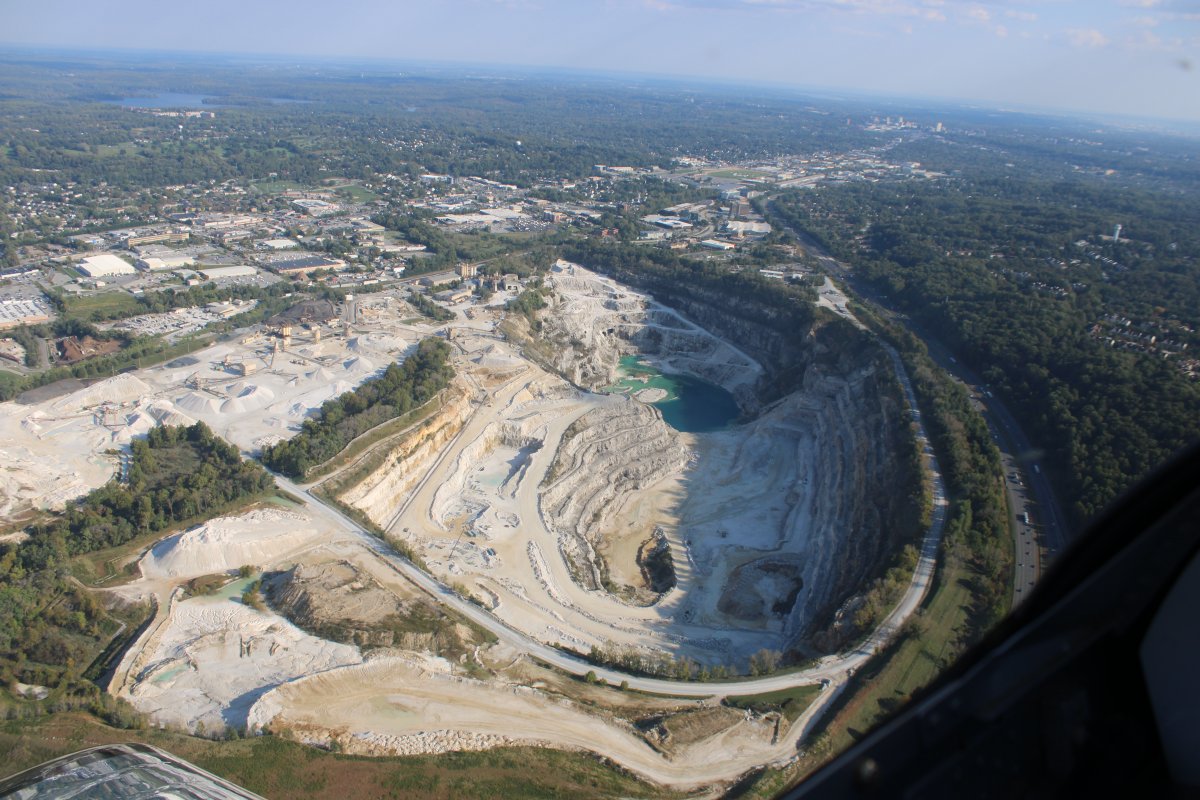 |
|
|
The Texas Quarry, near of the intersection of I-83 and Warren Road, dating back to the 19th century, produces limestone and marble, including the marble used in the first phase of construction (1848–54) of the Washington Monument, the whiter portion towards the bottom half of the monument. During the second phase of construction (1880–84) the monument had to be finished using a slightly different-colored stone, most of which came from the Beaver Dam Quarry (now Beaverdam Pond) just north of the Texas Quarry. Blocks of local marble were also used in 1836 as rail supports in the track bed for the Padonia Road section of the Baltimore and Susquehanna Railroad (which later became part of the Northern Central Railway); the use of marble instead of wood was an experiment that was soon after abandoned.
|
| |
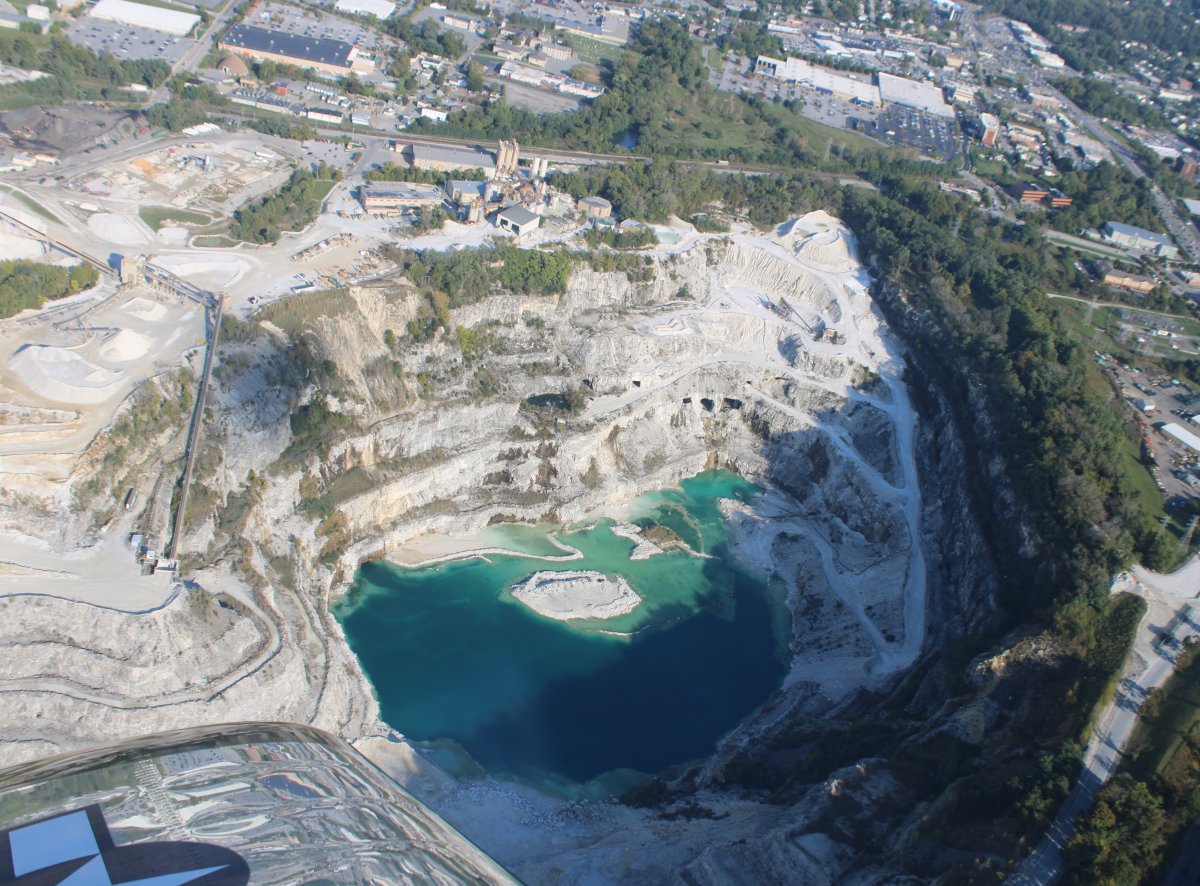 |
|
|
The Maryland State Fairgrounds in Timonium on the grounds of the former Timonium Race Course.
|
| |
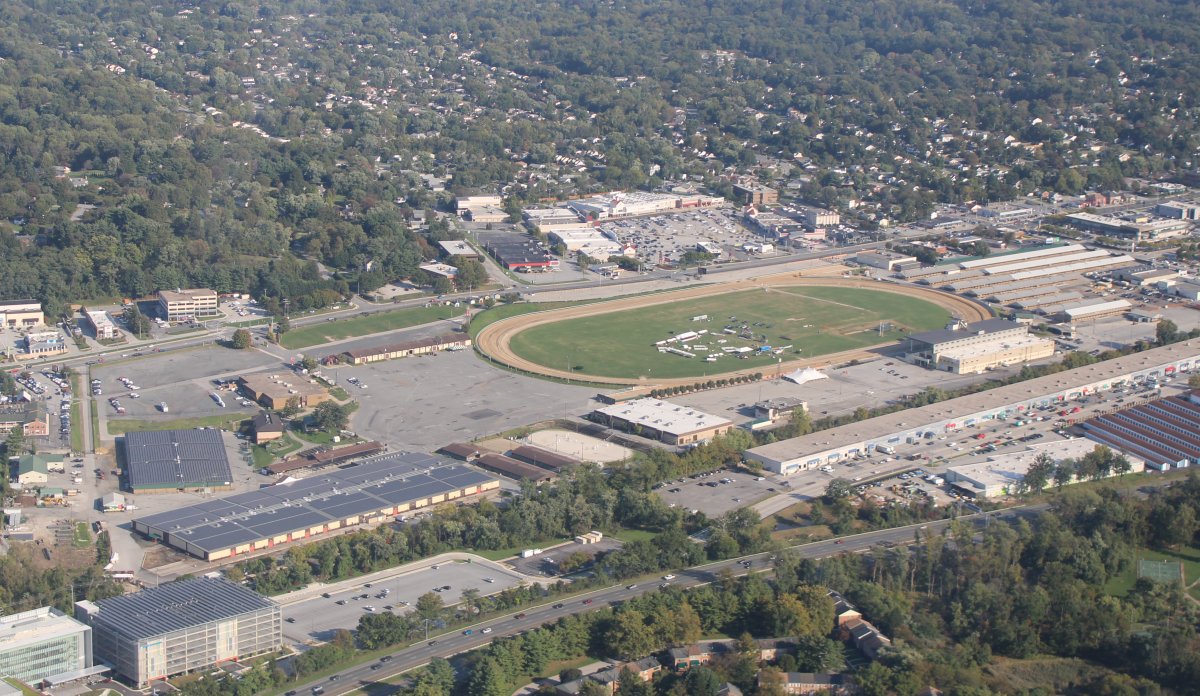 |
|
| |
| |
|
|
|
|
|
|










































